The role of crew positions and duties on a sailboat
Discover the key crew positions and their duties on a sailboat to ensure a safe and enjoyable journey exploring the open sea with your family.

The Role of Crew Positions and Duties on a Sailboat
Sailing is an exciting and fulfilling way to explore the world with your family, but it’s also a complex endeavor that requires a solid understanding of various crew positions and duties. In this article, we’ll delve into the different roles on a sailboat, their responsibilities, and how they contribute to a successful sailing adventure.
Table of Contents
Introduction, watch leader, galley crew, communications officer.
Before we dive into the specific crew positions, it’s important to note that the size and complexity of your sailboat will determine the number of crew members needed. On a smaller boat, one person may take on multiple roles, while larger boats may require a full crew to operate efficiently. Regardless of your boat’s size, understanding the various roles and their duties will help ensure a safe and enjoyable sailing experience.
The skipper, also known as the captain, is the person in charge of the sailboat. They are responsible for the overall safety and well-being of the crew and the vessel. The skipper’s duties include:
- Planning and executing the sailing itinerary
- Ensuring the boat is properly maintained and equipped
- Making decisions regarding navigation, weather, and safety
- Managing the crew and assigning tasks
- Ensuring all crew members are trained and competent in their roles
- Handling emergencies and making critical decisions under pressure
The skipper should have extensive sailing experience, strong leadership skills, and a thorough understanding of the boat’s systems and capabilities.
The first mate, or mate, is the skipper’s right-hand person and is responsible for assisting with the management of the boat and crew. The first mate’s duties include:
- Assisting the skipper with navigation, weather, and safety decisions
- Supervising and directing the crew in their tasks
- Stepping in as skipper if the skipper is incapacitated or unavailable
The first mate should have strong sailing skills, good communication and leadership abilities, and a solid understanding of the boat’s systems and capabilities.
The navigator is responsible for planning and executing the boat’s course, taking into account factors such as weather, currents, and hazards. The navigator’s duties include:
- Creating and updating the boat’s passage plan
- Monitoring the boat’s position and progress using charts, GPS, and other navigational tools
- Identifying and avoiding potential hazards, such as reefs, shoals, and shipping traffic
- Communicating with the skipper and crew regarding the boat’s course and any necessary adjustments
The navigator should have strong navigational skills, a keen eye for detail, and the ability to think critically and make decisions under pressure.
On longer passages, the crew will typically be divided into watches, with each watch responsible for sailing the boat for a set period of time. The watch leader is responsible for overseeing their watch and ensuring the boat is sailed safely and efficiently. The watch leader’s duties include:
- Ensuring the crew on watch is performing their tasks correctly and efficiently
- Monitoring the boat’s course, speed, and sail trim
- Communicating with the skipper and other watch leaders regarding the boat’s progress and any issues that arise
- Ensuring the crew on watch is well-rested and alert
The watch leader should have strong sailing skills, good communication and leadership abilities, and the ability to make decisions under pressure.
The helm, or helmsperson, is responsible for steering the boat and maintaining its course. The helm’s duties include:
- Steering the boat according to the navigator’s instructions
- Monitoring the boat’s speed and adjusting the sails as needed to maintain optimal performance
- Communicating with the crew regarding sail trim and other adjustments
- Keeping a lookout for potential hazards and other vessels
The helm should have strong sailing skills, good communication abilities, and a keen sense of awareness.
Deckhands are responsible for handling the sails, lines, and other equipment on the boat. Deckhand duties include:
- Hoisting, lowering, and trimming sails
- Tying and adjusting lines, such as halyards, sheets, and dock lines
- Assisting with anchoring and mooring the boat
- Performing routine maintenance tasks, such as cleaning and inspecting the rigging
Deckhands should have a basic understanding of sailing and be able to follow instructions and work well as part of a team.
The galley crew is responsible for preparing meals and maintaining the cleanliness and organization of the boat’s galley (kitchen). Galley crew duties include:
- Planning and preparing meals for the crew
- Ensuring the galley is clean and well-stocked
- Managing food storage and waste disposal
- Assisting with other tasks as needed, such as cleaning and maintenance
Galley crew members should have good cooking skills, be well-organized, and able to work efficiently in a small space.
The engineer is responsible for maintaining and repairing the boat’s mechanical, electrical, and plumbing systems. Engineer duties include:
- Performing routine maintenance on the engine, generator, and other systems
- Diagnosing and repairing mechanical, electrical, and plumbing issues
- Ensuring the boat’s systems are operating efficiently and safely
- Assisting with other tasks as needed, such as sail handling and deck work
The engineer should have a strong technical background, good problem-solving skills, and a thorough understanding of the boat’s systems.
The communications officer is responsible for managing the boat’s communication systems, including radios, satellite phones, and internet access. Communications officer duties include:
- Monitoring and operating the boat’s communication systems
- Ensuring the crew is aware of and follows proper communication protocols
- Communicating with other vessels, marinas, and authorities as needed
- Assisting with navigation and weather information
The communications officer should have a strong understanding of communication systems and protocols, good communication skills, and the ability to think critically and make decisions under pressure.
Understanding the various crew positions and their duties is essential for a successful sailing adventure. Whether you’re sailing with a full crew or taking on multiple roles yourself, being well-versed in these responsibilities will help ensure a safe and enjoyable journey for you and your family. As you gain experience and confidence in your sailing abilities, you’ll be better equipped to handle the challenges and rewards that come with living the sailing lifestyle.

Positions on a Racing Sailboat

Last Updated by
Gabriel Hannon
August 30, 2022
The success of a racing sailboat depends entirely on the ability of each person on the boat to know and execute their role in high-pressure situations.
While boat-dependent, all positions are some combination of the responsibilities of driver, bow, tactician, trimmer, and pit. The driver makes the final decisions and steers, while the other crew members play various roles providing information, trimming sails, and keeping the boat moving fast.
The fundamental responsibilities of sailboat racing do not change, regardless of the number of people aboard. Someone in a one-person dinghy has to be able to keep track of the course, make tactical decisions, trim sails, steer, watch for new breeze and other boats, and ensure that they are set up for the next leg. On a larger boat, with more sails, more controls, and more required coordination, these jobs still exist and are distributed amongst various crew members. We will go through the basic crew setups of various one-design racing boats from one through four crew members to develop how the increase in crew and complexity begins to distribute the responsibilities of making the boat go fast across the team. Then, we will make some general claims about bigger boats, but as everything gets more confusing in the larger crews, we will not specify too much.
Over years of racing boats of all sizes, I’ve seen these crew roles respond to personal skills, different boat setups, strange habits, and teamwork to the point where everyone can respond to different events seamlessly. Sometimes these roles are perfectly well-defined, but sometimes a quick-thinking crew will switch positions on a dime to make up for a mistake in an entirely unorthodox way that is somehow perfect. On smaller boats, people have different priorities and different ways to work through all their responsibilities, but on all the best boats it is the people who know how to excel in their role, and how to make life easier for all their teammates by knowing exactly what they need, who make a sailboat go. Let’s get into it!
Table of contents
The One-Person Dinghy: It’s All on You
You could argue that sailing, at its most basic, boils down to one sailor, a handful of lines, and a tiller against the breeze and water. Perhaps it would be a ridiculous argument, as sailing has always relied on people working together, but there is something to seeing who can go out there and be the one to make it work the best. When all the responsibilities for every inch of the boat fall on one person, it is interesting to see who has everything in sync the best. There is no specific title for this position, but I suppose you could call them
The Single-Handed Sailor
There are fundamentally three aspects to sailboat racing: boat speed, boat handling, and tactics. The single-handed sailor has to excel in each dimension. The best case study for a single-handed boat is the ILCA Dingy, once known as the Laser, but other notable racers include the Opti, Finn, RS Aero, Moth, and Wazsp classes.
Boat speed comes down to trimming the sails properly for the angle to the wind. This means adjusting not only how far in and out the sail is, but also tuning specific control lines to give the sail the ideal shape for wind strength and direction. Making micro-adjustments to sail trim while dealing with all the other aspects of the race may not seem like much, but they can make the difference between winning and falling behind. While on larger boats there are entire positions dedicated to this, the single-handed sailor has to deal with this the whole time.
Other factors in boat speed concern steering through the wind shifts and wave sequences properly and keeping the boat flat by hiking out. This often includes being able to shift weight in precise ways to keep the boat optimally balanced and cutting through the waves.
Boat Handling
While boat speed forms the basis of all sailing, it is also crucial to know how to maneuver the boat through course changes. Windows in sailing races are small, and being able to get a boat into a lane is often a fraught affair. Having the confidence to trim the sails properly and maneuver sharply while still maintaining speed is a huge boost to a racer. Turning points at marks or directional switches while tacking and gybing are where many of the gains in a race come, and a clean tack coming into the top mark on port can mean the difference between leading the fleet and having to duck behind a parade of 30 boats. Being able to put on the brakes and accelerate quickly is key in tight spaces along the start line, and is a weapon for the best sailors.
Singlehanded racers have total control over their boat handling. Changes in direction come down to perfect synchronization of sail trim, steering, and body weight, and the single-handed sailor has to account for how every single adjustment affects these maneuvers. Some of the best boat handlers grow up racing single-handed boats; the feel developed sailing solo is hard to beat but requires years of fine-tuning and muscle memory.
All the speed and maneuverability in the world does not do much if you don’t know where to put the boat. Like any sport, the fundamentals are simple, but becoming a master takes a lifetime. The single-handed sailor must hold the entire course, the regularity of the wind shifts, the tendencies of the current, the positions of the other sailors, and their own plans in the front of their minds while pushing the boat as hard as possible.
While this is no place to discuss the intricacies of upwind tactics or the fastest lines on a downwind in different boats, the singlehanded sailor has to be able to think and make decisions tactically then execute those decisions themselves. This is such a large task that bigger boats will often have someone whose entire job is just to call breeze and tactics.
The single-handed sailor is without a doubt a jack-of-all-trades. We will discuss various terms for different crew-members on bigger boats, and while you could use the terms ‘skipper’ or ‘driver’ for the single-handed sailor, this does not quite say it all, so we save these positions for the bigger boats. We will not explicitly break the other boats down by who is in charge of boat speed, boat handling, and tactics, but roles can generally sort into various levels of responsibility for these categories.
The Two-Person Racer: The Best (or worst) Way to Get to Know Another Person
On a two-person boat, of which common examples include the various 420 classes, the Olympic Classes (470, 49er, Nacra 17) among many others, responsibilities are slightly split, but this distribution comes with the tradeoff of greatly increased complexity and coordination requirements. Double-handed boats tend to have at least two, and often three, sails, require more involved tuning, move much faster, and occasionally require single or double trapezing. The very best doublehanded pairings move as one, but this type of coordination requires both sailors to have an intimate knowledge of their role and the dynamic balance of the boat. Without further ado, the common positions:
The Skipper (Driver)
The skipper of the boat steers the boat. On different types of boats, they have different trimming and setting responsibilities, most often including the mainsheet--though the 49er is a notable exception. You can call them either a skipper or a driver, but you rarely say that ‘you skipper;’ instead, you would say that ‘you drive,’ so the latter term has begun to stick as the position as well.
As they are the person driving the boat, the driver tends to make the final tactical decision. They do this in collaboration with the crew, who is often going to be feeding information about the course and competitors to the driver, but the final decision comes down to the person holding the stick (forgive the vernacular, if you may).
Different double-handed teams often have different dynamics. In some, the driver will primarily be focused on tactics, while the crew has to keep their head in the boat making it go fast, while in others the skipper lets the crew make such calls while focusing on the breeze right in front of them, it all depends. Boat handling requires nigh on perfect coordination, and skippers must keep their crews alerted to any upcoming maneuvers.
The unsung heroes of many a double-handed pairing, a good driver can sail well with an ok crew, but a crack crew can take a skipper with some potential to the top of the fleet.
Responsible for trimming the headsail and setting and managing the spinnaker on boats that carry them, the crew’s primary roles is to keep the boat going fast. They often can make the small sail trim and control adjustments that the driver cannot. Especially upwind, the crew scans the course for new breeze, other boats, lay lines, and any information that the skipper could need to make the best decisions possible.
A good way to consider some, but not all, skipper-crew relationships is that the crew can get all the micro-considerations out of the way so that the skipper can focus on the big picture. The small picture adjustments in terms of sail control and angle of heel keep the boat moving and the skipper zippered into the feel of the course. In turn, this allows the skipper to plan ahead and keep the crew involved in decision making, making sure that they don’t screw their crew with a crash tack or sudden gybe.
Still, on some teams, the crew makes all of the outside the boat decisions while the driver just drives the boat as fast as they can. This often works with spacier skippers, of which there are many, and highlights the value of a strong-willed crew. Crews are often on-the-water coaches for high-strung skippers and are key to the success of a team. On more athletic boats, a crew can crucially contribute to boat speed and handling through trimming, ooching, and body-weight adjustments.
All of this is to say that a crew, both as a single person on a double-handed boat and as an ensemble on larger boats, is never to be considered an accessory to the skipper, but are crucial parts of a competitive racing team.
The Three or Four Person Boat: I Thought That Was Your Job!
Having outlined the general dynamics of a skipper-crew pairing, it is not particularly helpful to discuss exact boat setups and interactions. From here, we will provide terms and positions with general roles. These are all subject to change, but once you reach boats of three or more people, roles become highly specialized, as boats of this size begin to get complex enough that you cannot do everything on your own. Let’s run through the general roles that must be filled on boats of up to four, with the knowledge that these can be switched around and combined depending on skill, boat setup, and breeze.
Things change yet they stay ever the same. The bigger the boat, the more boat the driver has to deal with, but the role does not fundamentally change. The driver still has their hand on the stick, and, despite the best attempts of various crewmembers, still is the final decision maker on the boat. Sometimes they will trim the mainsheet as well, but other times they will leave this to a member of the crew
The bigger the boat, the less running around the skipper does and the more focused they are on sailing the perfect line through the fleet. Even their ability to scan the course and make tactical evaluations wanes on the bigger boats, as they must put more trust in their crews to make the right reads. They are still ultimately responsible for putting the boat in the right spot, but they are ultimately unable to control everything that is happening on the boat.
Debatably the easiest analog to the crew on a double-handed boat, the bow is, if nothing else, the most likely person on the boat to get soaking wet. Sitting the farthest forward, they are occasionally responsible for trimming the jib--particularly on three-person boats--but primarily have to deal with setting the spinnaker and dealing with front-of-boat controls.
They can play a role calling tactics, breeze, and other boats, but because they are so often busy with the chaos of boat handling in crucial spots and are often far away from the skipper, they mostly need to focus on their role setting the chute and managing the complications near the front of the boat.
Trimmer/Tactician
Often sitting at the hip of the skipper, different boats have different assignments for their trimmers, which can range from main-trimming across the whole course to only touching the spinnaker off the breeze to controlling the jib instead of the bow. Regardless of the particulars, they need to make the adjustments that keep the boat moving fast, and need to be continually in sync with how the skipper wants to sail.
The person in this position is often responsible for communicating details about the course and from the rest of the crew to the driver. Their role gives them more time to look around and make fine adjustments, rather than having a continuous responsibility, so they are in the perfect position to survey the information at hand and collaborate with the skipper on decision making.
On three-person boats, this is generally one person playing both roles in active collaboration with a driver. On certain four-person boats, this can lead to two trimmers who alternate between calling tactics and trimming different sails depending on the leg. Other times, this role is fully bifurcated, with one person trimming and another entirely responsible for looking around and making calls, with only a menial role controlling the sails, but this looks different on every team.
While Nascar has its pit crews, beginning at four-person boats, sailing just has its pit person. As boats get bigger, sails and various lines are more prone to twists, knots, and the generalized snarls that give sailors across the world excuses to flex their famous propensity for swearing.
The pit is responsible for eliminating, or at least minimizing, these disasters via preventative prep. They do not have a conventional job trimming sails, per se, but they are the ones who make sure that everyone else can the sails set cleanly. They prefeed sheets, ‘run the tapes’ on off-the-breeze sails to make sure they aren’t twisted and are notorious neat freaks. They often are responsible for raising and lowering sails around mark roundings; these events are almost always chaotic and never go according to plan, so it is the pit who has to coordinate the chaos as much as possible and clean up the mess in time for the next explosion. Unheralded, often stuck below decks, the pit can be the difference between a boat running smoothly and a stream of curses over a huge gash in a thousand dollar spinnaker.
Now This Is Getting Ridiculous: The Road to Specialization
As of this point, we have covered the key roles on just about any sized boat. As you get to bigger and more specialized boats, the situations will call for more and more crew members doing increasingly focused work. While having talented sailors on a larger boat is no less important than having them on a smaller dinghy, there are simply not that many parts that have to be moving all the time to fully occupy more than a few people at a time.
Still, when they are needed, during gybes, mark roundings, sets, and douses, these extra crew members are crucial. On certain boats, there is an entire position dedicated to trimming the twings during gybes; the position is only slightly more serious than the sound of the ropes. Still, the other crew members are so busy during the gybes that they need the extra pair of hands. Furthermore, having a sharp sailor in a position like that ensures another pair of eyes and hands to spot problems and step in if needed. Knowledge and quick action are unlikely to go unappreciated on any boat, even if it is only in a very specific setting.
There is, however, one more term for extra crew members on boats of this size, and it is distinctly unspecialized: meet the ‘rail meat.’ On sufficiently big boats, where heeling is slow but a fact of life, every now and then you just need a big ole guy to sit on the edge and hang out to windward. A flat boat is a fast boat, and sometimes you just need someone hanging out over the rail, skilled and mobile or not.
Finally, on high-performance boats, like America’s Cup boats or the new-fangled SailGP league, rail meat is replaced by ‘grinders,’ who specialize in turning hydraulic cranks like they’re in a CrossFit gym. Sometimes drawn from other sports, famously including rugby players on New Zealand’s America’s Cup team, grinders may not have the tactical acumen to step into a single-handed boat and win the day, but they are key pieces to winning teams and are no less a sailor than anyone else.
Hopefully, next time you go down to the water and someone tells you they need someone to run their bow, this has done enough for you to know exactly what you’ve gotten yourself into! Happy sailing!
Related Articles
I have been sailing since I was 7 years old. Since then I've been a US sailing certified instructor for over 8 years, raced at every level of one-design and college sailing in fleet, team, and match racing, and love sharing my knowledge of sailing with others!
by this author
Most Recent

What Does "Sailing By The Lee" Mean?
Daniel Wade
October 3, 2023

The Best Sailing Schools And Programs: Reviews & Ratings
September 26, 2023
Important Legal Info
Lifeofsailing.com is a participant in the Amazon Services LLC Associates Program, an affiliate advertising program designed to provide a means for sites to earn advertising fees by advertising and linking to Amazon. This site also participates in other affiliate programs and is compensated for referring traffic and business to these companies.
Similar Posts

How To Choose The Right Sailing Instructor
August 16, 2023

Basics Of Sailboat Racing Explained
May 29, 2023

Cost To Sail Around The World
May 16, 2023
Popular Posts

Best Liveaboard Catamaran Sailboats
December 28, 2023

Can a Novice Sail Around the World?
Elizabeth O'Malley
June 15, 2022

4 Best Electric Outboard Motors

How Long Did It Take The Vikings To Sail To England?

10 Best Sailboat Brands (And Why)
December 20, 2023

7 Best Places To Liveaboard A Sailboat
Get the best sailing content.
Top Rated Posts
Lifeofsailing.com is a participant in the Amazon Services LLC Associates Program, an affiliate advertising program designed to provide a means for sites to earn advertising fees by advertising and linking to Amazon. This site also participates in other affiliate programs and is compensated for referring traffic and business to these companies. (866) 342-SAIL
© 2024 Life of Sailing Email: [email protected] Address: 11816 Inwood Rd #3024 Dallas, TX 75244 Disclaimer Privacy Policy

The Ultimate Guide: How to Crew on a Sailboat for Beginners
Alex Morgan
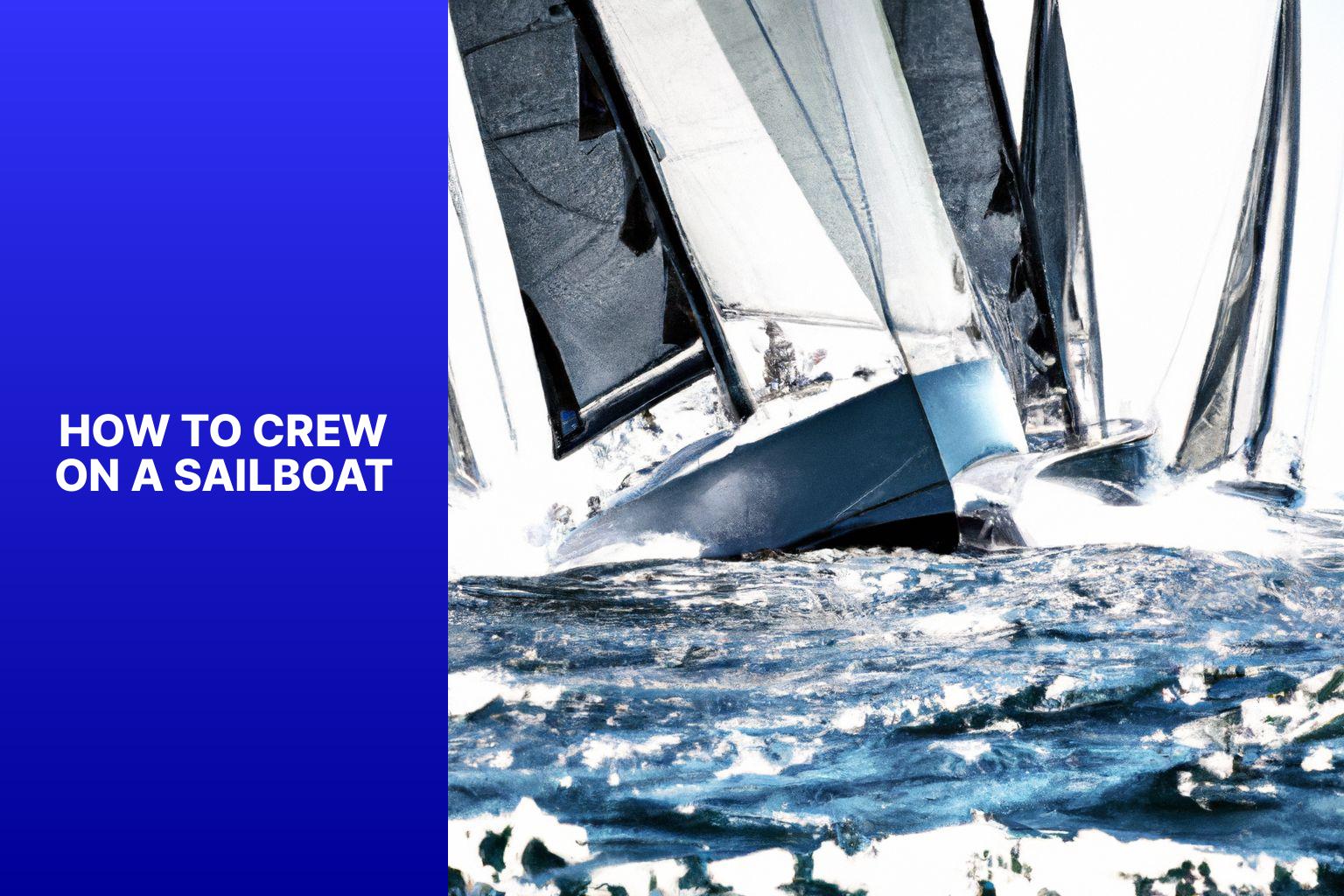
Crewing on a sailboat is an exhilarating experience that allows you to harness the power of the wind and navigate the open waters. Whether you are a seasoned sailor or a beginner looking to learn the ropes, understanding the fundamentals of crewing on a sailboat is essential for a successful voyage.
In this article, we will explore the different aspects of crewing on a sailboat, including the types of sailboats, roles, and responsibilities of crew members, essential skills and qualities, safety procedures, knot tying, sail trim, rigging, and navigation. By the end of this article, you will have a comprehensive understanding of what it takes to be a valuable crew member on a sailboat adventure.
Before we delve into the details, let’s start with an introduction to crewing on a sailboat. We will then discuss the different types of sailboats, such as monohulls and catamarans, and the distinct features and characteristics of each. Understanding the type of sailboat you will be crewing on is crucial for mastering the specific skills required on board.
Next, we will outline the various roles and responsibilities of crew members. From the skipper who leads the crew to the helm , trimmer , bow crew , mast crew , and navigator , each position plays a vital role in ensuring the smooth operation and maneuvering of the sailboat.
To be an effective crew member, certain skills and qualities are essential. We will discuss the importance of sailing knowledge and experience, teamwork and communication, physical fitness, and problem-solving skills. These attributes will contribute to a harmonious and efficient crew dynamic.
Safety is of utmost importance while at sea. We will cover the basic safety equipment that should be on board, man overboard drills for emergency situations, first aid and emergency response, as well as weather awareness and preparedness.
Knot tying and line handling skills are essential for sailboat crew members. We will introduce you to some essential knots like the bowline knot , clove hitch , and cleat hitch , as well as teach you how to properly coil and tie lines.
Understanding sail trim and rigging is another crucial aspect of crewing on a sailboat. We will explore how to control sail shape, adjust halyards and sheets, and tune the rigging to optimize performance and efficiency.
We will touch upon navigation and chart reading, including basic nautical charts, compass usage, and dead reckoning. These skills will enable you to navigate your course with confidence and precision.
By the end of this article, you will be equipped with the knowledge and skills necessary to enjoy the adventure of crewing on a sailboat. So, let’s set sail and embark on this exciting journey together.
Key takeaway:
- Crewing on a sailboat requires teamwork and communication: Successful crew members must possess strong teamwork and communication skills to effectively work together on a sailboat.
- Safety is paramount: Being aware of basic safety procedures, emergency response, and weather conditions is essential for maintaining a safe environment while crewing on a sailboat.
- Knowledge of sail trim and rigging is crucial: Understanding how to control sail shape, adjust halyards and sheets, and tune the rigging is key to optimizing performance and efficiency on a sailboat.
Types of Sailboats
When it comes to hitting the waves, understanding the different types of sailboats is key . In this section, we’ll uncover two distinct categories: monohulls and catamarans . Get ready to dive into the thrilling world of sailboat crewing as we explore the characteristics and unique features of each type. So whether you’re a seasoned sailor or a curious novice, let’s embark on a voyage of discovery and unravel the wonders of these magnificent vessels.
1. Monohulls
Monohulls, also known as sailboats with a single hull, are highly stable vessels that are capable of handling rough seas. This characteristic is what makes them immensely popular for both offshore cruising and racing activities. Monohulls come in a range of sizes, spanning from small day-sailers to colossal ocean-going yachts. The ingenious design of monohulls enables easy maneuverability and enhanced ability to sail close to the wind. For added stability, monohulls are equipped with a keel beneath the hull.
These sailboats are furnished with a variety of sails suited for diverse sailing conditions and speeds. These include the main sail, genoa, jib, and spinnaker. In order to effectively handle the sails, navigation, and steering of the boat, a crew is required. In terms of interior space, monohulls boast a comfortable and spacious layout, ideal for lengthier voyages. Their versatility is another commendable aspect as they can be utilized for day trips as well as extended cruising.
2. Catamarans
Catamarans, with their wide beam and twin hulls, are well-known for their stability and spaciousness. These characteristics make them a comfortable choice for individuals prone to seasickness .
Not only that, catamarans are generally faster than monohulls due to the reduced drag provided by their twin hulls.
When it comes to space, catamarans offer larger cabins, lounges, and deck areas, ensuring ample living and storage space.
Their shallow draft enables them to access shallow anchorages and explore areas that are out of reach for monohulls.
Choosing between a catamaran and a monohull depends on personal preferences and sailing goals.
If stability, spaciousness, and comfort are top priorities, a catamaran may be the ideal choice.
On the other hand, if speed, agility, and the ability to point higher into the wind are prioritized, a monohull may be more suitable.
Roles and Responsibilities of Crew Members
Sailing the seas is a beautiful adventure, but it takes a well-coordinated crew to navigate the unpredictable waters. In this section, we’ll dive into the essential roles and responsibilities of each crew member on a sailboat. From the knowledgeable skipper to the skilled helm , the meticulous trimmer to the agile bow and mast crew, and the sharp-eyed navigator , each position plays a vital role in ensuring a smooth and successful voyage. So, grab your life jacket and let’s set sail into the world of crewing on a sailboat.
The role of a skipper on a sailboat is crucial for the overall operation and safety of the crew and vessel. The skipper, also known as the boat captain, is responsible for making navigational decisions, ensuring the boat is operated safely and efficiently, and overseeing the activities of the crew.
One of the key responsibilities of a skipper is making navigational decisions based on their strong knowledge of seamanship and navigation. They must have excellent leadership and decision-making skills to set the course and determine sail configurations. Additionally, effective communication and teamwork abilities are essential in managing and coordinating the crew.
The skipper also plays a vital role in ensuring safety protocols are followed and has the problem-solving skills and ability to handle emergencies. They monitor weather conditions and adjust plans accordingly, relying on their strong understanding of meteorology and weather patterns.
For aspiring skippers, it is recommended to continuously learn and improve their sailing skills and knowledge. Participating in races or joining sailing clubs can provide valuable experience and opportunities to refine their leadership abilities. It is also important to stay up-to-date with advancements in technology and equipment to enhance their proficiency in managing the boat and crew.
Remember, becoming an effective skipper takes time and experience. Embrace a lifelong learning mindset and commit to ongoing growth and development to excel in this important role on a sailboat.
The helm is responsible for steering and controlling the direction of a sailboat. To effectively helm a sailboat, follow these steps:
1. Take your position at the helm and familiarize yourself with the steering mechanism.
2. Maintain a steady grip on the tiller or wheel and balance your stance.
3. Monitor the wind direction and adjust the sails accordingly for optimal performance.
4. Coordinate maneuvers and navigate obstacles by communicating with the skipper and crew.
5. React promptly to changes in wind speed and direction to maintain control of the boat.
6. Keep a lookout for other vessels, obstacles, or potential hazards in the water.
7. Steer the boat smoothly and make minor course adjustments as needed.
8. Be aware of the boat’s speed, acceleration, and responsiveness to your steering inputs.
To enhance your helm skills, practice regularly in different weather conditions and on various sailboats. Seek feedback from experienced sailors and learn from their insights. Remember, mastering the helm requires sailing knowledge, adaptability, and sharp decision-making skills. Enjoy the adventure of crewing on a sailboat and embrace the learning opportunities it offers.
The trimmer is an essential role on a sailboat. Their primary responsibility is to adjust the sails for optimal performance and efficiency. They achieve this by changing the sail position based on the wind direction and speed. Collaborating closely with the helm, the trimmer ensures the sails are adjusted according to the boat’s course and desired speed. Clear communication between the trimmer and helm is crucial for making quick adjustments.
In addition, the trimmer continuously monitors the sail performance and makes necessary adjustments to maintain optimal speed and efficiency. They also assist in tuning the rigging by adjusting the tension of the mast, shrouds, and stays. This helps improve the sail shape and overall performance of the boat.
During sail changes, the trimmer plays a vital role in hoisting, lowering, and adjusting new sails efficiently. Their expertise in sail trim allows them to minimize any loss of speed or performance during these transitions.
The trimmer needs to have a deep understanding of wind shifts and the ability to anticipate changes in wind direction. This skill allows them to make proactive adjustments to maintain optimal sail trim.
The trimmer is crucial in maximizing sailboat performance. Their expertise in sail trim and ability to quickly adapt to changing conditions are essential for success on the water.
4. Bow Crew
The Bow Crew , also known as the Bow Crew , plays a crucial role in the smooth operation and navigation of a sailboat. This team has a set of key responsibilities and tasks, including the following:
1. Setting and handling the anchor: As part of their duties, the Bow Crew prepares and deploys the anchor when the sailboat reaches its intended anchorage. It is essential that they know how to properly set and secure the anchor to keep the boat in place.
2. Managing the bow line: Another important task for the Bow Crew is handling the bow line, which is used for mooring the boat or securing it to a dock. To accomplish this safely and securely, they need to possess the necessary skills in knot tying and line handling.
3. Assisting with docking maneuvers: During the docking process, the Bow Crew provides assistance with line handling and ensuring that the boat remains a safe distance from the dock to avoid any damage. Effective communication with other crew members is crucial for a smooth and secure docking process.
4. Keeping a lookout: A primary responsibility of the Bow Crew is to keep a vigilant watch for any potential obstacles or hazards in the water, including other boats, buoys, or rocks. Their role is to promptly alert the rest of the crew to ensure safe navigation.
5. Handling sails and line adjustments: As part of their tasks, the Bow Crew assists with handling and adjusting sails, particularly during tacking or gybing. It is important for them to be familiar with the proper techniques for hoisting, lowering, and reefing sails.
Being a member of the Bow Crew requires a keen attention to detail, excellent communication skills, and the ability to work effectively as part of a team. Safety and efficiency are of paramount importance in the performance of these duties.
5. Mast Crew
The role of the mast crew is vital in ensuring the smooth operation and maneuverability of a sailboat. The mast crew plays a significant role in handling and maintaining the sails to optimize the performance of the boat. They are responsible for various tasks, including hoisting and lowering sails as directed by the skipper or helm, ensuring proper alignment and integrity.
The crew members also trim and adjust the sails to achieve the desired sail shape and maximize speed and efficiency using control lines such as halyards, sheets, and reefing lines. They proficiently assist in reefing , reducing the sail’s size during strong winds. The mast crew is responsible for inspecting and maintaining sail-related equipment, promptly fixing any issues that arise. Effective communication between the crew members, helm, and trimmers is crucial to ensuring coordination between sail adjustments and boat maneuvers.
To be a successful mast crew member, it is essential to have a good understanding of sail trim , excellent teamwork, communication skills, physical fitness, and problem-solving abilities. Safety should always be a priority, and crew members should be knowledgeable about safety procedures, weather conditions, and emergency response protocols.
To excel in this role, it is recommended to practice tying essential knots such as the bowline , clove hitch , and cleat hitch . Understanding navigation charts, using a compass, and mastering dead reckoning will greatly enhance your skills. Embrace the challenges and rewards of being a vital part of the mast crew and enjoy the adventure of crewing on a sailboat.
6. Navigator
The role of a navigator on a sailboat is crucial for the safe and accurate navigation of the vessel. The navigator is responsible for incorporating their expertise in chart reading, navigation instruments, and situational awareness to guide the boat to its destination. Collaborating with other crew members, the navigator ensures that informed decisions are made based on the current conditions and the planned route. By efficiently using nautical charts and considering factors such as wind direction, current, and obstacles, the navigator plots the best course. They also read and interpret charts, understanding symbols, depth contours, and other information to locate the boat’s position and plan the route. Navigational instruments like compasses, GPS devices, and depth sounders are utilized by the navigator to accurately determine the boat’s heading, speed, and position. The navigator practices dead reckoning , estimating the vessel’s position based on the previous known position, course, speed, and time elapsed. It is important for the navigator to maintain situational awareness , remaining alert to detect any changes in conditions, hazards, or approaching vessels. Ultimately, a skilled navigator plays a vital role in ensuring the safety of the crew and the boat, making the journey a success.
Essential Skills and Qualities for Crew Members
Ready to set sail? In this section, we’ll delve into the essential skills and qualities that make a great crew member on a sailboat. From sailing knowledge and experience to teamwork and communication skills , physical fitness , and problem-solving abilities , we’ll uncover what it takes to be an invaluable part of a sailing team. So grab your life jacket, because we’re about to embark on an exciting journey through the seas of crewing on a sailboat!
1. Sailing Knowledge and Experience
When it comes to sailing, having a strong foundation of sailing knowledge and experience is crucial for crew members. Here are some important points to consider:
1. Take sailing courses: Sailing courses provide valuable knowledge and hands-on experience. Courses like the American Sailing Association’s Basic Keelboat or Royal Yachting Association’s Competent Crew can teach fundamental skills and build confidence.
2. Join crewing opportunities: Enhance your sailing experience by actively seeking crewing opportunities. Connect with experienced sailors through local sailing clubs or associations. Offer your services as a volunteer crew for regattas or offshore races to gain practical experience.
3. Practice on different sailboats: Expand your sailing knowledge by familiarizing yourself with various types of sailboats, such as monohulls and catamarans. Each type has unique characteristics and requires different handling techniques.
4. Learn sail trim: Understanding sail trim is essential for optimizing a sailboat’s performance. Make sure to familiarize yourself with concepts like wind angle, sail shape, and adjusting halyards and sheets for proper sail tension.
5. Navigate using charts: Develop the necessary skills to navigate using basic nautical charts. Learn how to interpret symbols, depth soundings, and landmarks to plot a course and ensure safe passage.
6. Gain experience in different sailing conditions: Improve your proficiency by actively practicing sailing in various weather conditions and sea states. This will allow you to handle different situations with ease.
By continuously learning and gaining hands-on experience, crew members can significantly improve their sailing knowledge and skills, ultimately resulting in safer and more enjoyable sailing experiences.
2. Teamwork and Communication
Teamwork and communication are crucial for a successful sailing experience. It is important to consider several key aspects:
Clear communication: Use concise language to effectively convey information and instructions among crew members. This includes using proper nautical terms and hand signals while on the water.
Active listening: Actively listen to each other and the skipper to ensure a clear understanding of tasks, directions, and safety procedures.
Collaboration: Working together as a team is vital for smooth sailing. Support each other, share responsibilities, and coordinate tasks to maintain the boat’s performance.
Trust and respect: Trust and respect each other’s abilities and decisions to create a cohesive crew. Value each person’s contribution and treat everyone with respect.
Problem-solving: When faced with challenges or unexpected situations, maintain a calm and proactive approach. Collaborate to find solutions and make quick decisions when necessary.
Adaptability: Sailing conditions can change rapidly. Be adaptable to adjust strategies and actions accordingly. Being flexible and open to change is crucial for successful teamwork.
Efficient coordination: Coordinate movements and actions to maximize efficiency and prevent accidents or mishaps. Synchronize maneuvers, handle equipment together, and maintain good balance and stability.
By prioritizing teamwork and communication, a sailboat crew can operate smoothly and enjoy a safe and rewarding sailing experience.
3. Physical Fitness
Physical fitness is important for crew members on a sailboat. Here are the key factors to consider:
- Endurance : Crew members need good cardiovascular fitness to endure long hours of physical activity on the boat, like hiking out or grinding winches.
- Strength : Strength is crucial for tasks like hoisting sails and maneuvering equipment. Upper body and core strength are particularly important.
- Flexibility : Flexibility helps crew members perform maneuvers effortlessly, like moving around the boat, adjusting sails, and maintaining balance.
- Balance : Good balance is essential to prevent falls and injuries on a moving sailboat. Crew members should practice exercises that improve stability and coordination.
- Agility : Sailboats require quick and agile movements, especially during maneuvers or when responding to changing wind conditions. Agility training helps crew members react swiftly and efficiently.
Maintaining physical fitness is vital for the safety of crew members and the overall performance of the sailboat. Regular exercise, including cardiovascular workouts, strength training, stretching, and balance exercises, can improve physical fitness and enhance sailing abilities.
In the Volvo Ocean Race, physical fitness played a crucial role in the success of the teams. The sailors endured extreme weather and long hours of physical exertion. Teams prioritized fitness training tailored to sailing’s demanding nature. This focus not only improved performance on the boat but also reduced the risk of injuries and contributed to overall well-being. The dedication to physical fitness exemplified the importance of being in top form as a crew member on a sailboat.
4. Problem-Solving Skills
Problem-solving skills are essential for crewing on a sailboat. Here are key points to consider:
- Quick thinking: Crew members must think quickly and come up with solutions to unexpected challenges that may arise during a sail. This could include equipment malfunctions or changing weather conditions.
- Resourcefulness: Being resourceful is crucial when problem-solving on a sailboat. Crew members need to make the most of limited resources, using their creativity to find solutions.
- Clear communication: Effective communication is vital for problem-solving as it allows crew members to share information and ideas. It also helps avoid misunderstandings and ensures everyone is on the same page when addressing a problem.
- Collaboration: Problem-solving on a sailboat often requires teamwork. Crew members must work together, listen to each other’s ideas, and contribute their expertise to find the best solution.
- Adaptability: The ability to adapt and adjust plans is crucial when facing challenges on a sailboat. Crew members should be flexible and willing to change course if necessary, prioritizing the safety and well-being of the crew.
Fact: Cultivating problem-solving skills enhances a crew member’s proficiency and boosts the overall well-being and success of the sailing experience.
Safety and Emergency Procedures
When it comes to crewing on a sailboat, one aspect that cannot be overlooked is safety and emergency procedures . It’s crucial to have a solid understanding of how to handle any unforeseen situations that may arise. In this section, we will explore the key elements that contribute to a safe sailing experience . From basic safety equipment to man overboard drills , first aid and emergency response, and weather awareness and preparedness , we will cover everything you need to know to ensure a seamless and secure journey on the open waters .
1. Basic Safety Equipment
Basic safety equipment is crucial for sailboat crew members to guarantee the well-being and security of all on board. Here is a comprehensive list of necessary safety equipment:
- Life jackets : Every crew member requires a properly fitting life jacket approved by the Coast Guard. These jackets provide buoyancy during emergencies.
- Throwable flotation devices: An easily accessible flotation device, such as a lifebuoy or rescue ring, should be readily available for rescuing individuals who fall overboard.
- Fire extinguisher : An easily accessible fire extinguisher that is properly maintained is vital in case of fires on the boat.
- Flares : Flares are used for signaling for help during emergencies. Crew members should be knowledgeable about their usage and have them easily accessible.
- First aid kit : It is essential to have a well-stocked first aid kit on board to treat minor injuries and provide initial care until professional medical assistance is available, if necessary.
- Bilge pump : A bilge pump aids in removing water from the boat’s bilge, ensuring the vessel remains afloat and free from excess water.
Regular inspection and maintenance of all safety equipment is critical to ensuring proper functionality. It is also important for crew members to be familiar with the location and operation of these items in order to swiftly respond during emergencies.
2. Man Overboard Drills
Man Overboard Drills are critical for sailboat safety. These drills are essential to ensure that the crew is well-prepared and able to respond promptly and efficiently in the event that someone falls overboard. Here are the steps to follow when conducting man overboard drills:
- Alert the crew by shouting “Man overboard!”
- Indicate the person’s location by pointing at them in the water.
- Mark the spot by activating the man overboard button on the boat’s navigation system.
- Assign a crew member to maintain visual contact with the person in the water.
- Position the boat in a close-hauled position to have the best sailing angle towards the individual.
- Throw a flotation device towards the person in the water.
- Assign a crew member to initiate the recovery process while wearing a safety harness and lifeline.
- Approach the person in the water while maintaining a safe distance.
- Use a boat hook or your hand to grab hold of the person’s life jacket or clothing.
- Assist the person in getting back onto the boat using proper lifting and transfer techniques.
Remember, regular practice of man overboard drills improves the proficiency of the crew and ensures the safety of everyone on board. It’s also crucial to designate a specific crew member responsible for calling for outside assistance if necessary. Stay vigilant and be prepared for any emergencies while out at sea.
3. First Aid and Emergency Response
When it comes to sailing, being prepared for emergencies and knowing how to respond is crucial. Here are some important aspects to consider for first aid and emergency response :
1. Basic Safety Equipment: All crew members should know the location and proper use of safety equipment such as life jackets, fire extinguishers, and flares.
2. Man Overboard Drills: Knowing how to quickly perform a man overboard drill is crucial in case someone falls overboard. This involves maneuvering the boat, throwing out a lifebuoy or device to mark the spot, and executing a rescue plan.
3. First Aid and Emergency Response: Crew members should have a basic understanding of first aid techniques, including CPR and basic wound care. It is important to have a well-stocked first aid kit on board with essentials like bandages, antiseptic solutions, and pain relievers.
4. Weather Awareness and Preparedness: Monitoring changing weather conditions is crucial for safety. Crew members should understand the signs of impending storms and know how to respond appropriately, such as reefing the sails or seeking shelter.
True History Fact: During a sailing race in the Caribbean in 2014, a crew member suffered a severe leg laceration due to a shifting piece of equipment. The crew’s knowledge of first aid and emergency response allowed them to quickly control the bleeding and provide proper wound care until the injured crew member could receive medical attention at the nearest port.
4. Weather Awareness and Preparedness
Weather awareness and preparedness are vital for the safety of sailing. In order to ensure a safe journey, it is important to follow these steps:
- Stay updated: It is essential to regularly check weather forecasts to stay informed about any changes or alerts.
- Learn the signs: Familiarize yourself with visual cues that indicate different weather patterns, such as cloud formations or shifts in wind direction.
- Understand wind patterns: Take the time to study wind maps and charts so that you can identify the prevailing winds in your sailing area. This knowledge will assist you in planning your course and anticipating any potential changes in wind speed and direction.
- Monitor barometric pressure: Stay vigilant and keep track of any changes in barometric pressure, as they can serve as an indication of approaching storms or changes in weather conditions.
- Be aware of storm systems: It is crucial to stay informed about the development and movement of storms, including tropical storms and hurricanes, as they may affect your chosen sailing route.
- Prepare for adverse weather: Make sure to have the necessary gear on board, such as rain jackets, warm clothing, and safety harnesses, in order to protect yourself from inclement weather.
- Develop an emergency plan: Create a procedure for handling extreme weather situations and ensure that all crew members are familiar with it.
- Know your limits: It is important to understand the capabilities of your boat and the skill level of your crew. Avoid sailing in conditions that are beyond your comfort or experience level.
- Seek shelter if necessary: In the event of severe weather, it is advisable to find a safe haven where you can anchor or take refuge until conditions improve.
Essential Knots and Line Handling
Mastering the art of knot tying and line handling is an essential skill for any crew member on a sailboat. In this section, we’ll dive into the world of essential knots and various techniques for handling lines. From the versatile bowline knot to the secure clove hitch and convenient cleat hitch , we’ll explore the key knots that every sailor should know. We’ll cover tips and tricks for properly tying and coiling lines, ensuring smooth and efficient sailing adventures. Get ready to become a knot-tying expert !
1. Bowline Knot
The bowline knot is a crucial knot for sailors, as it creates a strong loop at the end of a rope. To tie a bowline knot , follow these steps:
1. Start by making a small loop in the rope, ensuring that the end of the rope is on top.
2. Pass the end of the rope through the loop from underneath.
3. Next, bring the end of the rope around the standing part of the rope.
4. Pass the end of the rope back through the loop.
5. Tighten the knot by simultaneously pulling on the standing part of the rope and the end of the rope.
6. Once tightened, the bowline knot will securely hold, creating a loop that won’t slip.
During a sailing trip, a sudden storm caused a crew member to fall overboard. In response, the skipper immediately called for a man overboard drill, and the crew swiftly sprang into action. One skilled sailor promptly tied a bowline knot on a rescue line, ensuring a secure loop to pull the crew member back on board. The bowline knot proved its reliability as it held strong, resulting in a safe and successful rescue. It is crucial for sailors to know and practice essential knots like the bowline, especially in emergency situations at sea.
2. Clove Hitch
The Clove Hitch is a versatile knot used for various purposes on a sailboat. It is a reliable knot that can hold tension in two directions, making it useful for attaching fenders, securing sails, or creating anchor points. Tying a Clove Hitch is a quick and easy way to secure a line to a cleat or pole on a sailboat. Here are the steps to tie a Clove Hitch :
- Make a loop with the rope.
- Pass the end of the rope over the standing part.
- Bring the end of the rope under the standing part and over the loop.
- Pass the end of the rope under the standing part again.
- Pull the end of the rope tight to secure the Clove Hitch .
Practice tying the Clove Hitch to improve your knot-tying skills and ensure the safety and stability of your sailboat.
Fact: The Clove Hitch is named after the clove tree, known for its strength and durability in securing sailing knots.
3. Cleat Hitch
The cleat hitch is a practical knot for fastening a line to a cleat on a sailboat. Here are the steps to tie a cleat hitch:
1. First, take the line and pass it around the base of the cleat .
2. Next, cross the line over itself and bring it under the opposite horn of the cleat .
3. Then, loop the line over the top of the opposite horn of the cleat .
4. After that, wrap the line under the first loop, creating a figure-eight shape.
5. Now, pass the line under the second horn of the cleat .
6. Pull the line tightly to securely hold the cleat hitch in place.
Remember to always double-check that the cleat hitch is properly secured before relying on it to withstand tension. The cleat hitch is a reliable knot that can handle significant loads.
To improve your proficiency in tying the cleat hitch , make sure to practice it regularly. Get familiar with different sizes and types of cleats to be prepared for various situations while working on a sailboat.
4. Tying and Coiling Lines
When tying and coiling lines on a sailboat, it is important to follow these steps for a secure and efficient operation:
1. Begin by untwisting and freeing the line of any knots and tangles.
2. Next, wrap the line around a fixed object such as a cleat or winch at least two times. This will provide a secure anchor point .
3. To create a “ half hitch ,” form a loop with the line and pass the working end through it.
4. Pull the working end tight to securely fasten the half hitch .
5. Repeat the process of creating half hitches until the line is fully and securely fastened .
6. When it comes to coiling the line , hold the end in one hand and use your other hand to create loops.
7. Make sure to alternate the direction of each loop to create neatly coiled line .
8. To secure the end of the line , tuck the working end under one of the loops.
9. It is important to ensure that the coiled line is tidy and compact to prevent tangles and make it easier to handle.
Following these steps will ensure that your lines are properly tied and coiled , allowing for efficient and safe operation of the sailboat.
Understanding Sail Trim and Rigging
Get ready to set sail with an in-depth exploration of sail trim and rigging . We’ll uncover the secrets of controlling sail shape , fine-tuning halyards and sheets , and perfecting the rigging . Whether you’re a seasoned sailor or just getting started, this section will equip you with the knowledge you need to navigate the waters with confidence . So hop on board and let’s dive into the fascinating world of sail trim and rigging !
1. Controlling Sail Shape
Controlling sail shape is crucial for maximizing performance and efficiency. Here are the steps to effectively control sail shape:
Adjust halyard tension: Increase tension to flatten the sail for faster and more efficient sailing. This reduces drag and improves the boat’s movement through the water.
Tweak sheet angle: Sheet angle affects sail shape. By trimming the sheets appropriately, you can achieve the desired shape. Easing the sheets creates a fuller shape for lighter winds, while trimming in flattens the sail for stronger winds.
Use cunningham or downhaul: These lines control tension along the sail’s luff. Adjusting them flattens the sail and controls its shape, especially in the lower section.
Consider vang or boom kicker: These help control the sail’s twist. Adjusting them controls the shape of the upper part of the sail and maintains efficient airflow.
Use mast bend: Fine-tune mast bend to adjust sail shape. This can be achieved by adjusting backstay tension or using a mast bend control system.
Monitor and adjust sail controls: Use telltales attached to the sail to gauge its efficiency. Smooth-flowing telltales indicate optimal sail shape. Make necessary adjustments if the telltales are not flowing smoothly.
Observe and react to changing wind conditions: Continuously adjust the sail shape based on prevailing wind conditions. Lighter winds require fuller sails, while stronger winds need flatter sails to reduce heeling and maintain control.
By using these techniques, sailors can maintain optimal sail shape, leading to increased speed, improved stability, and overall better performance on the water.
2. Adjusting Halyards and Sheets
Adjusting halyards and sheets is important for sailboat crew members. It optimizes sail performance by making changes to the positioning and tension of the halyards and sheets . Here are some key points to consider:
1. Understanding sail shape: Adjusting halyards and sheets controls sail shape, impacting speed and maneuverability.
2. Tensioning halyards : Proper tensioning shapes the sails and captures wind effectively.
3. Trimming sheets : By adjusting sheets , crew members can fine-tune sail angle and tightness.
4. Balancing tension: Maintaining a proper balance prevents stress on the sails and rigging, promoting smoother sailing and reducing the risk of damage.
5. Continual monitoring: Adjustments may be needed throughout the sail, depending on wind shifts and other factors. Crew members should be attentive for optimal sail performance.
Mastering the skill of adjusting halyards and sheets enhances the overall efficiency and performance of the sailboat, improving the sailing experience for everyone on board.
3. Tuning the Rigging
To tune the rigging on a sailboat, follow these steps:
1. Inspect the rigging for wear or damage—look for frayed cables or loose connections.
2. Measure the tension in the rigging using a tension gauge. The optimal tension is typically around 15-20% of the breaking strength.
3. Adjust the rigging by turning the turnbuckles clockwise if it is too loose. Use a wrench to do this.
4. If the rigging is too tight, loosen it by turning the turnbuckles counterclockwise. Be careful not to over-loosen to prevent excessive mast movement.
5. After making adjustments, re-measure the tension using the tension gauge. Continue adjusting until the desired tension is achieved.
6. Check the mast rake, which is the forward or backward inclination of the mast. You can change the mast rake by adjusting the mast step or forestay tension.
7. Lastly, check the alignment of the mast. It should be straight from top to bottom. If there is any misalignment, adjust the rigging as needed.
Following these steps will ensure that the rigging on your sailboat is properly tuned, which is crucial for optimal performance and safety on the water.
Navigation and Chart Reading
Embarking on a sailboat adventure requires mastering the art of navigation and chart reading. In this section, we’ll dive into the essential skills needed to navigate the vast waters. From understanding basic nautical charts to utilizing a compass and practicing dead reckoning, we’ll equip you with the knowledge to confidently sail the seas. So, grab your compass and get ready to set sail on a thrilling journey of exploration and discovery !
1. Basic Nautical Charts
When crewing on a sailboat, it is crucial to understand basic nautical charts. These charts provide detailed information about navigational aids, such as buoys, beacons, and lighthouses, which help sailors determine their position and navigate safely. They also indicate water depths using soundings and contour lines to prevent grounding. Nautical charts include landmarks and features such as shorelines, islands, rocks, and channels, which help sailors identify their location and plan routes. Familiarizing yourself with the symbols and abbreviations used in charts can help you understand the information more effectively. Paying attention to the chart’s scale and orientation is important for accurate interpretation of distances and directions. It is also crucial to regularly update charts for changes in water depth, landmarks, and navigational aids, using the most recent chart available for accuracy. By using basic nautical charts, crew members can navigate safely and effectively on a sailboat.
2. Using a Compass
When it comes to sailing, using a compass is essential for navigation. Here are the steps involved:
1. Hold the compass level and steady, away from magnetic interference.
2. Align the compass housing with the direction of travel arrow.
3. Read the degree markings on the compass housing to determine the bearing.
4. Rotate the compass housing until the red magnetic needle aligns with the orienting arrow.
5. Read the determined bearing from the degree markings on the compass housing.
6. Keep the compass level and steady while following your desired bearing.
7. Periodically check the compass to ensure you are staying on course.
Using a compass accurately helps navigate, even when landmarks or other aids are not visible. It is an essential tool for sailors to reach their destination safely and efficiently.
In the early years of sailing, compasses were not always reliable due to factors like iron on the ship or variations in the Earth’s magnetic field. Advancements in compass technology and understanding of magnetic forces have made modern compasses more accurate and dependable. Today, sailors can rely on compasses to guide them, providing them with direction and improving their sailing experience.
3. Dead Reckoning
When sailing, dead reckoning is a technique to estimate your current position based on previous known positions and the boat’s course and speed. Here’s how you can do dead reckoning:
1. Record the boat’s starting position, course, and speed.
2. Monitor the boat’s course and speed over time, making adjustments for any changes.
3. Use the elapsed time and the boat’s speed to calculate the distance traveled.
4. Based on the boat’s course and distance traveled, plot a line on the chart from the starting position in the direction of the course.
5. If the boat changes course or speed, make note of these changes and adjust the line accordingly.
6. If there are known landmarks or navigational aids along the course, use them to confirm the estimated position.
Pro-tip: Improve the accuracy of dead reckoning by regularly comparing the estimated position with actual positions obtained through other navigation techniques such as celestial navigation or GPS.
Some Facts About How To Crew On A Sailboat:
- ✅ There are sailing opportunities available for amateur and professional crew members worldwide. (Source: Crewseekers.net)
- ✅ It is free for everyone to browse through all current sailing opportunities, but membership is required to contact yacht owners and join their crew. (Source: Crewseekers.net)
- ✅ Walking the docks in sailing towns and using the internet are effective ways to find crew opportunities and work on sailboats. (Source: Transitions Abroad)
- ✅ Some captains are willing to take inexperienced sailors and teach them along the way, making crew positions accessible to those without prior experience. (Source: Transitions Abroad)
- ✅ Crewing on sailboats allows individuals to experience the rawness and basic nature of life at sea, as well as the beauty of the ocean and the night sky. (Source: Transitions Abroad)
Frequently Asked Questions
1. how can i find crewing opportunities on sailboats.
You can find crewing opportunities on sailboats by walking the docks in sailing towns and talking to people, using the internet to search for crew opportunities, or participating in cruising rallies organized by experienced sailors.
2. Are there sailing opportunities available for all experience levels?
Yes, there are sailing opportunities available for both amateur and professional crew members worldwide, regardless of their experience level.
3. How can I join a sailboat crew?
To join a sailboat crew, you need to register and become a member of a yacht crew introduction agency. This will allow you to browse through current sailing opportunities and contact yacht owners to join their crew.
4. What are the essential roles on a sailboat?
The essential roles on a sailboat include the Captain, who is the decision maker; the cook, who ensures the crew’s sustenance; the person at the helm, who makes critical decisions; and the dog watchers, who take care of the dog and anchor during off hours.
5. Can inexperienced sailors join sailboat crews?
Yes, many sailboat captains are willing to take inexperienced sailors and teach them along the way. Trustworthiness and a hard-working attitude are important attributes when looking for a crew position.
6. What are the benefits of crewing on a sailboat for travel?
Crewing on a sailboat for travel offers a unique and affordable way to see the world. It saves money on airfare and provides a stronger connection to nature and the universe. It can also be a life-changing experience and an opportunity to learn new skills.
About the author
Leave a Reply Cancel reply
Your email address will not be published. Required fields are marked *
Save my name, email, and website in this browser for the next time I comment.
Latest posts

The history of sailing – from ancient times to modern adventures
History of Sailing Sailing is a time-honored tradition that has evolved over millennia, from its humble beginnings as a means of transportation to a beloved modern-day recreational activity. The history of sailing is a fascinating journey that spans cultures and centuries, rich in innovation and adventure. In this article, we’ll explore the remarkable evolution of…

Sailing Solo: Adventures and Challenges of Single-Handed Sailing
Solo Sailing Sailing has always been a pursuit of freedom, adventure, and self-discovery. While sailing with a crew is a fantastic experience, there’s a unique allure to sailing solo – just you, the wind, and the open sea. Single-handed sailing, as it’s often called, is a journey of self-reliance, resilience, and the ultimate test of…

Sustainable Sailing: Eco-Friendly Practices on the boat
Eco Friendly Sailing Sailing is an exhilarating and timeless way to explore the beauty of the open water, but it’s important to remember that our oceans and environment need our protection. Sustainable sailing, which involves eco-friendly practices and mindful decision-making, allows sailors to enjoy their adventures while minimizing their impact on the environment. In this…
Better Sailing
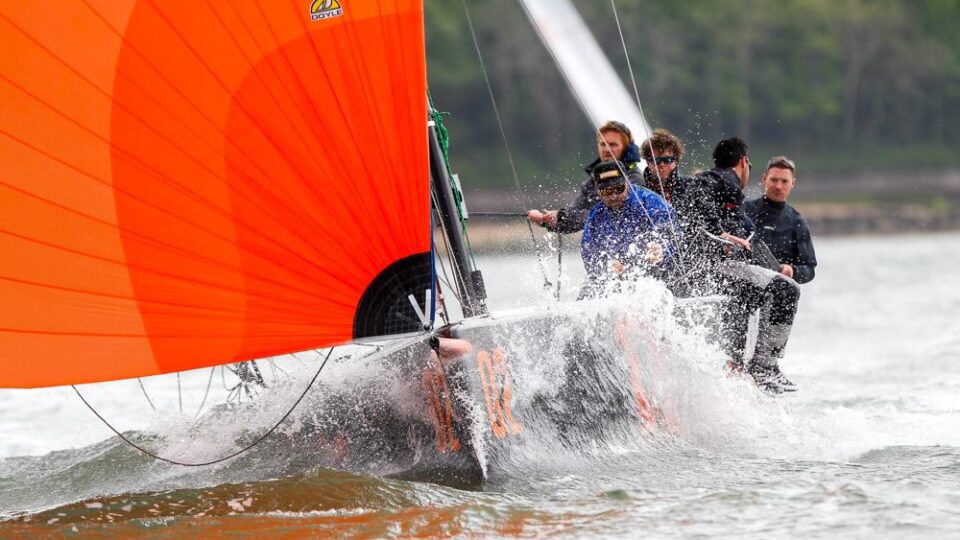
Sailing Crew Roles and Names
The skipper is responsible for the safety of the yacht and the crew’s welfare. However, sailing a boat successfully requires teamwork from the skipper and the crew. This will ensure that all maneuvers—such as leaving a mooring, hoisting sails, changing tacks, reefing, or entering a marina—can be completed with maximum enjoyment and minimum stress.
Boat Captain/Skipper
It may come as a shock, but the skipper is not necessarily the helm. This crew member must ensure that the boat is ready for sailing. He or she needs to make sure that all members of the crew are accounted for. They also need to make sure that food and fuel are sufficient, and sails are ready for hoisting. The skipper is in charge of keeping communications open onboard and help other crew members if needed. Also, they are usually responsible for talking the whole crew through maneuvers as they are about to happen and making sure that all crew members are ready.
What Makes A Good Skipper?
- Responsibility : The skipper is responsible for all aspects of the running of the yacht, its safety, and the crew’s wellbeing.
- Skills : He or she should be comfortable with sailing and navigation skills, inspire confidence in their crew, and be a good communicator.
- Delegation : A good skipper should keep on top of all his or her duties and give the crew tasks that are appropriate to their experience.
- Patience : He or she should be patient with inexperienced crew members and be able to run the yacht with a light touch while retaining respect and authority.
- Briefing : It is the skipper’s role to plan the passage in detail before setting sail.
- Involvement : A good skipper will also encourage the crew to get involved in passage planning and navigation and will always listen to their opinions.
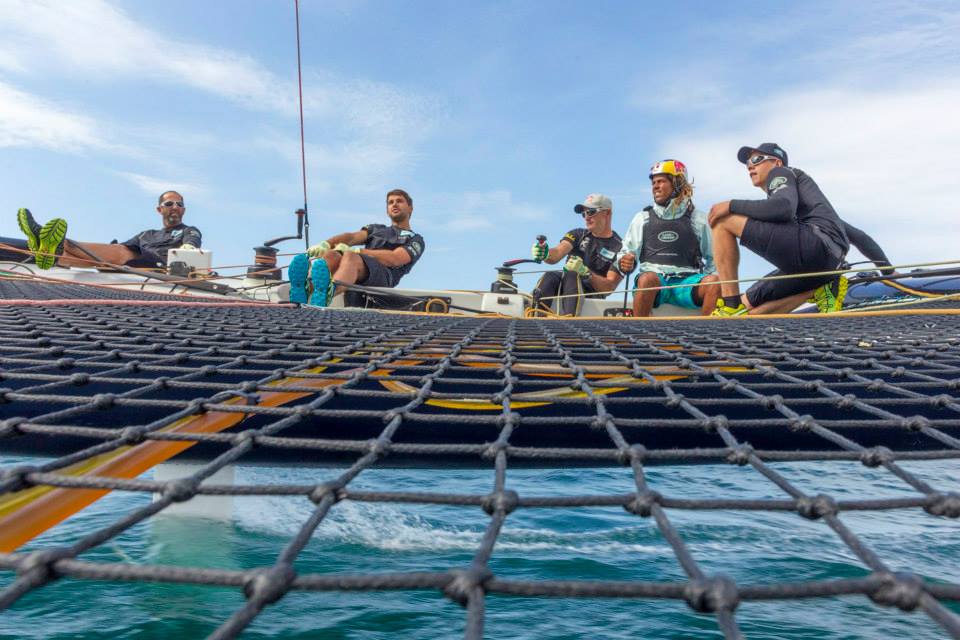

Tactician
The tactician’s role is to get the boat around the racecourse as fast as possible. For that, he needs to take into account the wind, tide, and other competitors, as well as the crew’s ability. They also need to make sure that the boat has the correct course. In short, the tactician is the brains of the sailboat. The tactician must communicate with the helm and skipper to run through maneuvers.
The Helm (Driver)
The Helm is often mistakenly perceived as the skipper. This crew role is to steer the boat where the tactician says and to keep sailing as fast as possible. The helm is also helping with other tasks, but they must focus on the job at hand as much as possible. The helm and the tactician must be in close communication with each other.
Head Sail Trimmers
This crew role is for two members, one who will cut release the sail when going through the tack while the other pulls in the full sail. The crew member releasing can then assist with tailing the sail or trimming it – which is a good example of teamwork. Also, the trimmer should keep adjusting the sail, depending on the point of sail, and should be very focused on that task. Also, the trimmers are in charge of trimming the spinnaker sail and guy when going downwind. Main communication is kept between each other, boat captain and tactician. Pre-start these guys will have a lot to do!
This crew member is in control of all sail hoists and drops depending on the wind. The bowman spends most of their time on the foredeck (the deck at the forward part of the sailboat), preparing for spinnaker hoists, gibes, and drops.
This crew member is a combination of both the bowman and mastman. They are in control of all of the running rigging which comes into the cockpit. This is a vital role and always in the middle of the action. Pitmans must keep communication is between bowman, mast man, and skipper—the eyes and ears for the foredeck crew.
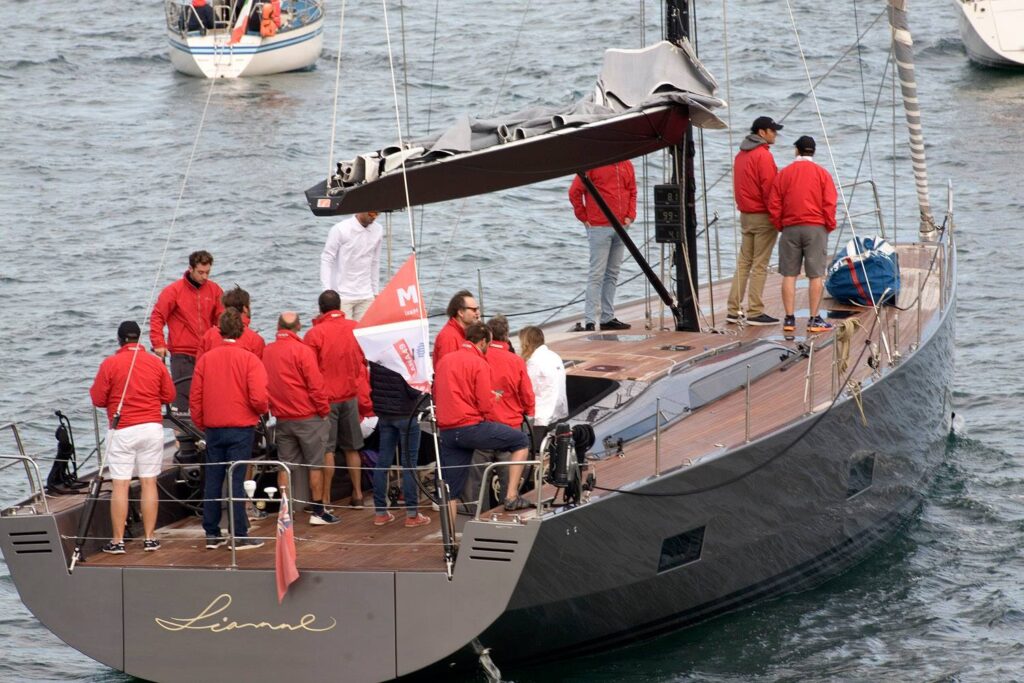
This position is reserved for the stronger members of the crew. A mastman’s foremost task is to assist with the speedy hoisting of the sails during maneuvers. The mast man and bowman go hand in hand and help each other on hoists and drops. The main communication is with the bowman, pitman, and skipper.
No sailing team is complete without its ballast crew members that help to balance the boat in order to reach its top possible speeds and maneuverability. These members of the crew are called ‘ballast’ and are key when racing for the mark. Ballast crew members have the best seat in the house.
What Makes a Good Crew Member?
- Key qualities : All crew members require a positive attitude, sense of humor, and the ability to get along with others in the confined space aboard a cruiser.
- Willingness to Learn : Good crew members are willing to learn and to take an active role in all aspects of running the yacht.
- Attentive : Diligent crew listen to the instructions carefully and ask questions if they do not understand anything.
- Working As a Team : All members of the crew must remember that they are part of a team. A happy gathering in the cockpit at the end of the passage is an indicator that each member of the crew has done their job.
Peter is the editor of Better Sailing. He has sailed for countless hours and has maintained his own boats and sailboats for years. After years of trial and error, he decided to start this website to share the knowledge.
Related Posts

Atlantic vs Pacific: Which is More Dangerous for Sailing?

Why Do Sailboats Lean?

How Does a Boat Sail Upwind? Unveiling the Mechanics of Against the Wind Sailing

How Does Sailing Work? The Physics of Sailing
- Buyer's Guide
- Destinations
- Maintenance
- Sailing Info
Hit enter to search or ESC to close.
- Learn to Sail
- Sailing News
- Submit News
- About MySail
- Find Yachts
- Find Events

- Yacht Racing
Guide to Different Crew Positions on a Race Yacht

RELATED ARTICLES MORE FROM AUTHOR
Vhf marine radio; answers to common questions, improve your performance with a race log for your yacht, why a crew debrief should be part of your post-race program, the perfect pre-race brief, checklist: prepare for race day, 5 tips to perfect race communications on your yacht.

POPULAR POSTS
Cyca storms the national sailing league on day two, mysail – now serving sailors and skippers in new zealand, national sailing league makes its australian debut, popular category.
- Sailing News 540
- MySail News & Updates 123
- Newsletter 94
- Yacht Racing 30
- Learn to Sail 18
- Sailor News & Stories 15
- Safety on Water 10
- Clubs & Associations 3
- Volunteering 2
- Privacy Policy
- Terms of Use
Know your Knots; How to Tie Common Sailing Knots
What Each Crew Position Wants You to Know
This article is a guide to show how small improvements can make a big difference for your fellow crew. Read on to learn what your crew wants you to remember each race!
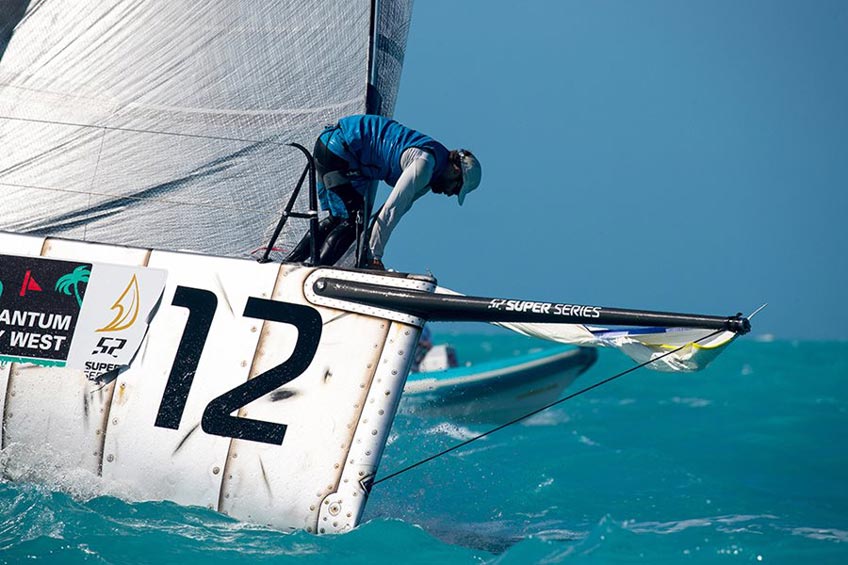
While it’s important to master your position on the boat, it’s equally as important to understand what’s going on in other domains and what you can do to make your teammates’ life easier and help the boat sail smoothly.
We reached out to a mix of successful sailors to find out what they want the other crew members to keep in mind to help them execute their job the best they can. Here’s what they had to say.
“The race is not over until the spinnaker comes down. It is easy to switch to recovery mode right after crossing the finish line, but this can be costly with a messy takedown, ripped or wet sail. To go along with this, after races finish send the jib bag up before the food bag! It’s frustrating for the bow when I’m are ready to flake the jib and everybody is eating.
I am happy to see the tactician’s general awareness of the bow team. We understand tacking mid jib-flake can’t always be avoided, but a quick cleanup with everyone cooperating makes life much easier. Lastly, my lifeline is the pit position, I like when this person is attentive and stays by their position until the bow team finishes cleaning up between races!” Anonymous bowman
“The mast is a lot easier when trimmers have patience on the set. They can pop the spinnaker open by sheeting too early and make the mast and foredeck look terrible! My key teammates are sewer and pit: a spinnaker set never works well if the trimmers, mast, sewer and pit are working independently, but when we hit on all cylinders, the set will be a thing of beauty. The other critical players to a happy mast are the tactician and helmsman. If the boat isn't in proper orientation to the wind when it is time to take the spinnaker down disaster can strike. A great bow/mast team will make it work, but a little waggle to help collapse the spinnaker goes a long way for a clean drop.” Andrew Spaulding*
“Be mindful of where things are thrown. For example: a jib change on the run, I may not be the one putting the old jib or bag down below, so I ask teammates to be mindful of the flaked kite halyard. I flake it once and then spend the rest of my run focusing on weight placement, pole position, finding the leeward marks and it becomes time consuming to have my head in the boat for longer than necessary.
The pit is in the middle of two groups. When it comes to maneuvers, the bow and brain trust may not always be on the same page, and I often have to decide which one to follow. If the back of the boat is calling for something that the bow is not ready to do; I can't force the issue. I can facilitate it, convey the sense of urgency, but I can't take the spinnaker down or jibe it by myself. This communication becomes easier if I receive clear and timely information from either end of the boat.” Scott Murin
Headsail Trimmer:
“Acknowledgment of communication. If I ask a teammate to do something, they should either act on it immediately or answer ‘copy’. If there is no acknowledgment, the person making the request often asks two or three times getting louder each time. I often see this situation and, my ultimate pet peeve is when the teammate finally answers and says ‘I HEARD YOU!’ When people say “copy” I can leave the task with them and move on. My other suggestion is to make habit of saying the person’s name before making a request so their attention is grabbed and time is not wasted by repeating what they didn’t hear before their name was called (this could be the difference between a collision and a race win).” Morgan Trubovich
“A briefing with the days goals. There should be a morning discussion describing the weather, potential courses, and anything else important. After the team is on the same page, people can break into groups depending on who they need to interact with throughout the day. I talk to my offside trimmer and grinders about what situations may come up and then I talk to the main trimmer about possible sails and boat settings.
It is also important to have quiet and calm maneuvers. I like to have ongoing discussions about what’s to come so when the boat is actually turning everyone has already anticipated their weight placement and I can focus on feeling the sheet run through my hands.” Dave Gerber
Main Trimmer:
“The most important thing is pressure calls and relatives. A main trimmer is ‘head in the boat’ which only gives them so much feel, so consistent and accurate information are crucial for boat speed. I am happy with simple dialogue with the tactician to know what modes are expected. If we develop standard steps, it becomes easy to be on same page.
The jib and main must also cooperate, they are constantly working together to make the boat do what the tactician wants. As a main trimmer, I let the jib do what they want and communicate when they are hitting the main or when they can be tighter. It’s good to develop concise key words and terminologies for any maneuver where the main has to be fine-tuned; some examples: high build, high kill, half tack, speed build, or racing.” Luke Lawrence
“I love it when new crew get onboard, listen to the race conversation and offer input where it might be lacking or where he/she can contribute value. For example, if no one is calling breeze on the rail, it’s great to have a crew take the initiative to make very concise and valuable breeze calls (Puff on in 3, 2, 1….). It’s also great when new crew take a few minutes to observe, listen and see what info or help might be needed instead of diving right in without first watching or thinking. It's valuable when a crew member offers input and "finishes the sentence." How many times have you heard someone say "...the right has a lot of pressure...." AND what??? Inquiring minds want to know. Finish the sentence: "... and they look strong/are headed/etc." Completing the sentence and picture for the tactician, driver and speed team is extremely helpful. A positive attitude and imploring the “5 second rule” (does what I’m about to say make sense and is it valuable? Am I finishing the sentence with my comment? ) make any crew a welcome addition to my boat." Ms. Sailsalot
“Come with a game face on. There is always time for bar talk, but it shouldn’t be before racing. I appreciate team members who get to the boat and prepare their position for racing. When people scatter and aren’t responsible for their area it takes away from what I need to be doing as a tactician and the performance suffers.” Geoff Ewenson
“Clear and short communication. I am happy when the trimmers and I are in sync with what steps we will take as conditions change. It is helpful for me to understand which way the trimmer is likely to move the leads, etc. as the breeze changes. For me, tactical input and observations are certainly invited before situations happen, especially 10 minutes before a start.” George Szabo
Boat Captain:
“Ask questions at the right time. I love when people want to learn and be involved with how the boat comes together, but choose a time when not much else is going on, probably not when I’ve just sat down to service a winch. I love it when each crew member takes responsibility for their station and addresses problems early, and to take it one step further if they are part of the solution whether it be a short term regatta fix or the long term ultimate fix, it’s fun to bounce ideas off others.
My life becomes easier when teammates self-delegate. I think of tasks as skilled and unskilled; if you are unsure how to help with the skilled boat work, there are always unskilled items that can be taken care of. Examples: filling water bottles, organizing down below, grabbing food and clean up. And if you still don’t know what to do, ask yourself, ‘If I were running this boat, what would I want done right now?’” Kyle Kant
*Editor’s Note: Shortly after publishing this piece, our team received the very sad news of Andrew Spaulding’s untimely passing. He was much loved by the sailing community and our team’s deepest sympathies go out to his friends, family and everyone who’s lives were touched by his wonderful spirit.
Crew Recruitment
Find Professional Crew
Reach 1000's of candidates worldwide! FREE of charge! Crewbay ranks applicants based on their suitability for your requirements. Short listing crew has never been easier. Find the perfect match today.
Jobs Worldwide
Create your FREE Crewbay profile and apply for jobs today. Explore the global jobs list and find your perfect job. New jobs are listed daily and updated regularly with our check-in system, ensuring we don't waste your time.
- Recreational
Global Crewing
All Levels Of Crew
Connect with all kinds of crew, free of charge. Whether you're looking for a helping hand, racing crew, delivery crew or whatever. Crewbay offers crew at all levels, worldwide. You will find all skill levels in far flung corners of the world, all with a close ephinity for the ocean.
Boats Worldwide
Post your profile advert free of charge! Search a wide variety of vessels, offering a multitude of crewing opportunites worldwide. From cruising, day sailing, deliveries, racing, island hopping, coastal sailing, eco projects and lots more. Contact skippers and captains direct.
The #1 Crewing Platform
Since its establishment in 2004, Crewbay has been at forefront of online crewing.
Professional Crew
Recreational Crew
Professional Jobs
Recreational Boats
Sign Up - It's Free
Cookie policy: By using this website you agree to our privacy policy . OK

Last updated: Feb 08, 2024
Sailing Positions

Positioning in sailing has to do with where your sail is facing and how it is being affected by the wind. In order to keep direction and speed, someone must be paying attention to the speed and direction of the wind and adjusting the sail accordingly. Even a slight miscalculation could be disastrous in sailing. Below, we will take a look at the different positions, duties, and jobs one can have on a sailboat.
Table of Contents
Sailing duties, tactician/trimmer.
The people who work on a ship can differ depending on the type of ship. The crew on a crew boat consists of eight people all sitting in a row on the boat. This is different from the crew on a yacht, which includes spinnakers, helmsman, bowmen, and more. Though their duties are different, the objective of both sets of crew is to work with the wind and tides to get to the next destination as quickly and easily as possible. With a yacht, this means dealing with a sail while a crew boat needs to paddle.
While the titles and roles of the various crew members on a sailing boat may vary depending on the league, race, and type of vessel, here are a few common positions you will hear of in sailing:
A sailing tactician, also sometimes referred to as a “trimmer,” checks the wind shifts and adjusts the course of the boat accordingly . In races, their job is to guide the boat and the other crew members along the racecourse in order to get them to the finish line as fast as possible. They must take into account the angle of the sail, wind, and tide and then choose which side of the line to favor. Even a small miscalculation by a tactician can mean the end of the race for a whole team.
Trimmers are often referred to by whichever sail they are in charge of: for instance, the trimmer who works the mainsail will be referred to as the “mainsail trimmer,” while a trimmer who works the foresail will be called a “foresail trimmer.” Trimmers may also be referred to by where on the boat they are stationed (e.g. “port trimmer” and “starboard trimmer”).
A driver, also sometimes referred to as a “helmsman," keeps the boat pointed in the direction that the tactician suggests. As their name suggests, the act of keeping the point pointed in the best possible direction is known as “driving.” Drivers are also responsible for making sure a maximum safe speed is maintained throughout the duration of the race.
A mastman is the main crewmember who assists with the quick hoist of a sail during maneuvers. This sailor is typically the strongest member of the crew, because they must be able to easily move the sail during strong wind shifts. A mastman will work closely with the bowman and keep in communication with the pitman and captain.
The understudy, also known as the second officer, is the second-in-command and helps manage the crew. While the tactician or first officer is in charge of navigating the boat in the correct direction, the understudy helps manage the bridge team and makes sure the deck team is acting in accordance with the first officer’s orders. Understudies will also learn the jobs of the mastman, bowman, and pitman to fill in where necessary. Understudies are most often seen on large yachts and superyachts.
The bowman is the crew member that is in charge of the sail . This is a very important job, because once a tactician signals, a bowman must be ready immediately to angle the sail or raise/drop it at a moment’s notice. If a sail is not raised, dropped, or moved in time this can mean a drastic drift off course.
The pitman is similarly-named (and has a similar function to) the pit crew in many automobile racing sports . On a sailboat, however, the pit crew on a sailing boat is often just one person. The pitman is responsible for resolving any in-race issues with the boat that could cause a disaster or a loss while the race is underway.
Common things that the pitman may have to deal with are unexpected knots or entanglements in the rigging and ropes of the vessel, which can make it hard to raise or shift the sails as needed. Pitmen will also prefeed sheets and “run the tapes” on sails that are off the breeze to make sure that they do not get tangled. The pitman is also commonly charged with raising and lowering sails when the boat is rounding a mark.
What are the positions in sailing?
In sailing, position titles can vary based on what type of sailing you are performing, but the most common positions are tacticians/trimmers, a driver, a mastman, an understudy, a bowman, and a pitman. These positions divide up the various roles and duties on a sailboat, including guiding the ship, raising and lowering sails, undoing tangles and knots, steering, and calling maneuvers.
What is a sailing team called?
A sailing team’s name can differ among boat types. Normally they are called a “crew,” specifically on crew boats where the members are very close together and are forced to work as a team more than any other boat. Teams in a competition can also just be called “sailing teams” at international competitive events such as the Olympics .
What are the positions on a yacht?
Yacht crew positions include pitman, mainsheet trimmer, bowman, helmsman, spinnaker guy trimmer, and spinnaker sheet trimmer. The crew positions on a yacht are more complicated than that of a crew boat or a smaller sailing boat. While there are only six members, as compared to eight on a crew boat, they have more complicated responsibilities dealing with the mainsail as well as other factors involved in a yacht.
Pages Related to Sailing Positions
- Top 10 Sailing Video Games
- Sailing Equipment List
- What Are The Rules Of Sailing?
- Sailing Basic Rules For Kids
- Top 10 Sailing Movies
- Sailing Basics
Yacht jobs in seconds, reviews and salary data
Yachtcareerhub connects you to the perfect jobs faster and easier, you're in great company.

Chief Officer
by Hill Robinson
Deck/ Steward(ess)
by Crew Network
Sole Engineer
by Viking Recruitment
2nd Engineer
End of April
by Crew and Concierge
by Bespoke Crew
Fort Lauderdale
by Hello Sailor
Deck/ Divemaster
South East Asia
by Saltwater
by Northrop & Johnson
25th of March
by Bluewater
South Of France
Mid-late April
End of March
Mediterranean
South of France
by Marinescence
Lead Deckhand
Thousands of yacht crew use yachtcareerhub every day.
Powering yacht careers around the world, from greenies, to salty sea dogs
crew registered
crew agencies listed
active jobs
yachts reviewed
Get personalised job alerts directly to your inbox
Subscribe to YachtCareerHub+ to access job alerts and saved jobs
Personalised Job Offers: Set your preferences to only receive jobs that match what you are looking for, and nothing else. No spam, or irrelevant jobs!
Be among the first to apply: Don't be applicant 225, get in the frame early directly with the recruiter to give yourself the best chance. Job alerts are sent as soon as they are posted onto our website to our subscribed members so you can apply directly with the recruiter.
Saved Jobs: If you see a job you like, hit save so you can check your saved jobs list and apply later on. This also helps you track which jobs you applied for.
Yacht Reviews
We have over 200 yachts reviewed on our platform, to give you first hand insights into life onboard as crew
Post Anonymously: You can post your job title or choose to remain anonymous when posting a review.
Admin Approval: We check all reviews to ensure that they meet our community guidelines before publishing live.
Access Reviews: In order to gain access to our full catalogue of yacht reviews, you must first leave a review of your own.
Yacht Crew Salaries
In any industry it is always important to know your worth. This is why we created the go-to platform for yacht salaries and conditions.
See median averages for your positions as well as the full range of salaries.
Find out what types of contract are being offered, as well as rotation lengths.
See which positions usually include business class flights, private cabins and more.
Showing most recent listings first
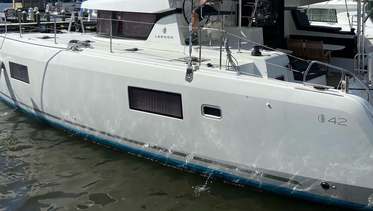
Last Minute 2-3 week cruise St. Thomas to Antigua
Boat type: 42' Catamaran
Location: St. Thomas
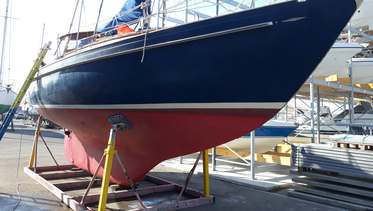
From Aegina to Cyprus a sailing adventure!
Boat type: Vindo 50 MS
Location: Aegina
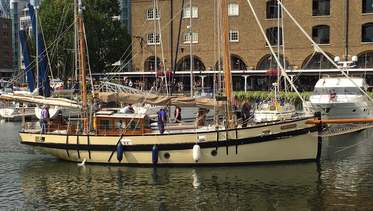
Mate / crew for historic gaff ketch on charters
Boat type: Wooden Gaff ketch, 1920
Location: Gosport / Ramsgate

RYA Cruising Instructors wanted - Greece
Boat type: Various Yachts
Location: Lefkada, Greece
Delivery from Grenada to Portugal
Boat type: Lagoon 52
Location: Grenada
Turkey - June 2024
Boat type: Hans christian 43
Location: Dover uk
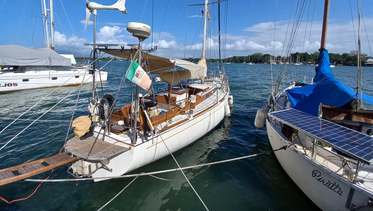
Crew for sailing vacation in Minorca
Boat type: 40 feet cutter classic custom
Location: Minorca
Skipper on 40 feet monohull for Minorca
Location: Menorca
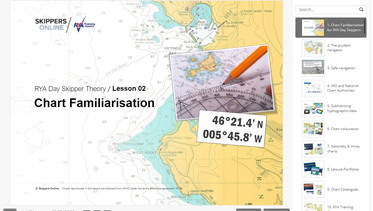
Day Skipper & Yachtmaster theory courses - 20% off
Online RYA theory courses with a great discount courtesy of Crewseekers.
Stay up-to-date with sailing opportunities
All of our sailing opportunities are posted on Facebook and Twitter. Follow us there and you’ll never miss an opportunity.
Recreational Crew Positions
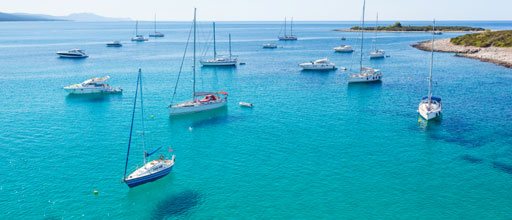
Recreational boating activities such as amateur sailing, racing, fishing, diving, or other social pursuits often require the assistance of crew members. These crew positions are offered on leisure boats or yachts that are not intended for commercial use or profit-making activities.
Although recreational boats are not permitted to try to make a profit or to engage in any commercial trade activities, asking recreational crew to contribute to some pre-agreed shared costs is generally permitted.
Recreational crew are required to: • follow instructions from the skipper or captain • demonstrate consistently responsible conduct and show respect for others on board • permit lawful operation of the vessel as requested by regulatory bodies, insurers and local authorities
Options for recreational crew when joining a boat: • contribute to costs – crew are asked to share some costs such as food, fuel, and mooring • unpaid positions – crew are not paid and crew are not required to contribute to any costs • reimbursed expenses – crew might be fully or partially reimbursed for pre-agreed expenses
Usually, recreational positions do not offer anything other than what's legally required, therefore always discuss mutual expectations and make sure you have something in writing before going on any boat! The more questions you ask, the less surprises there will be out at sea.
Connecting with strangers on the internet
Meeting new people online is not a lot different from meeting people in a pub, through a friend, or by answering a newspaper ad – your life experiences, personality, mental and physical abilities, as well as your instincts should guide you as to whether or not you feel comfortable.
To help your instincts, we cannot stress enough to ask lots of questions to establish your Plan A (Action plan)! It is surprising how often people just commit without knowing basic things. The more you know from the start, the fewer surprises there will be.
For your own safety, we strongly recommend to NEVER exchange personal contact details with strangers online straight away, or with people who don't provide credible information.
This is why our network is designed to view profiles and engage with members without having to exchange personal identity or contact details upfront until you feel comfortable to do so.
If you contact people directly via email to ask questions and build your relationship, make sure you save all the emails so that you can refer to them in case of any confusion later on.
It is a good idea to meet the person for the first time somewhere public, rather than having them pick you up from the hotel, or going straight to the boat. Meet at the airport, local cafe, or bar. Spend some time having a chat. This also enables you to see how they treat other people – waiters, strangers, receptionists, etc. – are they rude and demanding, or friendly and relaxed?
Always have a Plan B (Backup plan)! If you find you are feeling uneasy around someone, there is usually a reason for it. If something sounds too good to be true, it often is! There are great and generous people out there, but not everyone is, so always be sceptical when you receive offers too good to resist and ask yourself what the catch might be.
It is important to have thought through what you will do if it does not work out. It is a good idea to discuss this with the other person as well if you do decide to sail together. This gives you both the reassurance and protection that there are options available to go your separate ways fairly quickly if things don't work out.
Before you meet in person with a stranger ... Ask Questions! (see Example list of Questions to ask)
Example list of Questions to ask
We can never generalise about what members expect from each other as every person and every single situation is different.
When you register your profile on Find a Crew™, think about what you are really after. When you are contacted by someone, be ready with questions and details of your own situation. The more questions you ask, the less surprises there will be.
While most of our members report fantastic experiences, it can be very distressing if things don't work out how you would like. Many of these situations can be avoided just by asking more questions from the beginning.
Questions such as:
Boat Info • What safety equipment does the boat have, and has it been surveyed (inspected and rated)? • What condition is the boat in, and what is in need of repair? • Who does the maintenance on the boat? • What communication tools are onboard (email, sat. phone, etc.)? • Who is responsible for any expenses related to the boat (fuel, mooring, etc.)? • Who owns the boat? • Are there any crew from a previous trip that I can talk to?
Position description / expectations / responsibilities • Financial commitment from either side? • Is it a paid position? What are the rate and conditions of pay? • Expenses while onshore? • What will be your responsibilities? • What do you expect from the other party? • Is there smoking / drinking onboard? • Physical / emotional relationship expectations? • How much free time will you have? • Expectations from both sides of free time activities – onboard and onshore. • Who does the cooking and daily domestic duties? • Must a uniform be worn? Who provides the uniform? • Travel expenses – who covers them? • Travel to and from the boat – how, how much, where? • Where will you meet for the first time? • Must the crew pay a fee or contribute to any other expenses? • What skills, qualifications, and experience are required by crew?
Journey Details • What is the expected route of travel and how long do they plan to be underway? • Who are the other people on board, and how often and why do they change crew? • Who will be on this trip with you? • Any special luggage requirements – climate conditions? • What is the time schedule of the trip? • Will you have your own quarters?
Insurance / Visas / Passports • Is the boat or crew insured, and who is responsible for this? • Do you have the correct visas for the areas you will travel to? • Is your passport valid for longer than the time you will be away?
Other questions • Have they had crew / found a boat through FAC or a similar site before? • Can they provide personal and / or professional references? • Can you swim? • Are you familiar / comfortable with first aid procedures? • Do you get seasick? • What is Plan B if things don't work out?
There will be many more questions to relate to each situation, but the more time and thought you put into this side of things, the better your experience will be!
UFI approval for Moscow Boat Show
- Inspiration
Related News
Popular news this week, popular news this month, latest news.
- Yacht Charter & Superyacht News >
Written by Zuzana Bednarova
September 17 was marked by meeting of the UFI Executive Committee. During the event, the Committe approved the admission of Crocus Expo IEC as a full member of UFI in categories of “Exhibition Organizers” and “Exhibition Centres. Moscow Boat Show has been granted the status of “UFI Approved Event”.
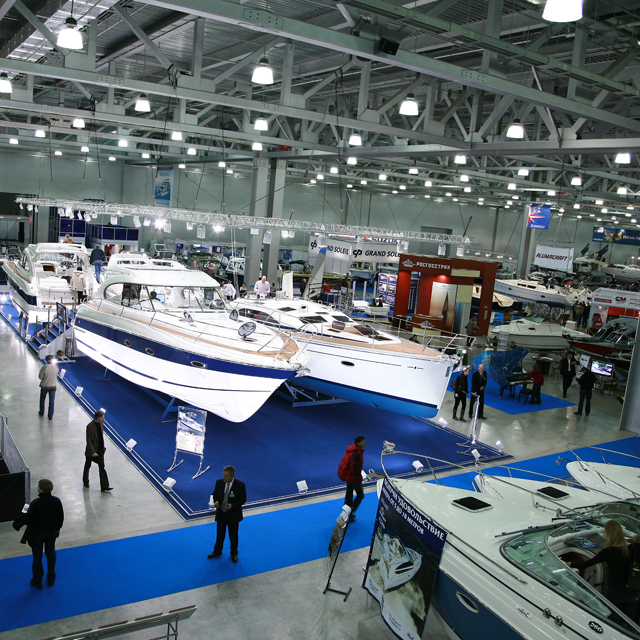
Moscow Boat Show
UFI, The Global Association of the Exhibition Industry is the association of trade show organizers, fairground owners, national and international associations of the exhibition industry, and its partners. As of 2012, it has 608 members in 224 cities from 86 countries covering 6 continents. The association members are responsible for the management and operation of over 4 500 profile events. The association represents more than 1 000 000 of exhibitors and more than 150 000 000 visitors.
The Crocus Expo Exhibition Centre is a listed member of the International Association of Congress Centres (AIPC), the Russian Union of Exhibitions and Fairs, the Guild of Exhibition and Fair Operators by the Moscow Chamber of Commerce and Industry. Donald Tramp fund has awarded Crocus Expo IEC Diamond Excellence Award.
Crocus Expo IEC is an ideal venue for running of large international and national exhibitions of different profile including congress events, conferences and scientific symposiums.About 50% of all exhibition events of Moscow take place in Crocus Expo and average exposition space load comprises 85%.
Moscow Boat Show provides the perfect platform from which to preview new products, evaluate market trends, and establish long-lasting and commercially profitable partnerships. Despite the dynamic changes taking place in Russia and the rapid growth of the yachting sector, the show continues to complement and reflect the industry’s demand and is a promotional opportunity not to be missed!
The exposition space will increase up to 45 000 sq m in 2013. More than 350 Russian and foreign companies will participate in the show. The scale of the project confirms confident positions of its positive development.
Moscow Boat Show is the largest project in Russia presenting all the best in the world of yachting. The exhibition annually shows high level of attendance and has already proved as significant and noteworthy event in the world of yachts and boats.
Please contact CharterWorld - the luxury yacht charter specialist - for more on superyacht news item "UFI approval for Moscow Boat Show".
- Charity & Fund Raising
- CharterWorld News
- Classic Yachts
- Coronavirus
- Cruise Ship
- Ecological Yachts
- Expedition Yachts
- Expert Broker Advice
- Feature Superyachts
- Interior Design
- Legal & VAT Yacht Issues
- Luxury Catamarans
- Luxury Gulet
- Luxury Phinisi
- Luxury Trimarans
- Luxury Yacht Design
- Luxury Yachts
- Marinas & Harbours
- Marine Ecology
- Marine Electronics
- Marine Equipment
- Mega Yachts
- Modern Yachts
- Motor Yachts
- New Launch Yachts
- New To Charter
- Open Style Sports Yachts
- Private Jets
- Sailing Yachts
- Social Media
- Sports Yachts
- Superyacht Crew
- Superyacht Photographers
- Superyacht Products & Supplies
- Superyacht Refits
- Superyacht Reviews
- Superyachts
- Uncategorized
- Yacht Builders
- Yacht Charter
- Yacht Charter Destinations
- Yacht Charter Picks
- Yacht Charter Specials
- Yacht Delivered to Owner
- Yacht Designers
- Yacht Events & Boat Shows
- Yacht Fashion
- Yacht Industry News
- Yacht Photos
- Yacht Racing
- Yacht Racing & Regattas
- Yacht Safety Equipment
- Yacht Support Vessels
- Yacht Tenders
- Yacht Videos
- Yachting Associations
- Yachting Awards
- Yachting Business
- Yachts For Charter
- Yachts For Sale
Quick Enquiry
Superyacht news:.
Email Your Yachting News to: news @ charterworld.com
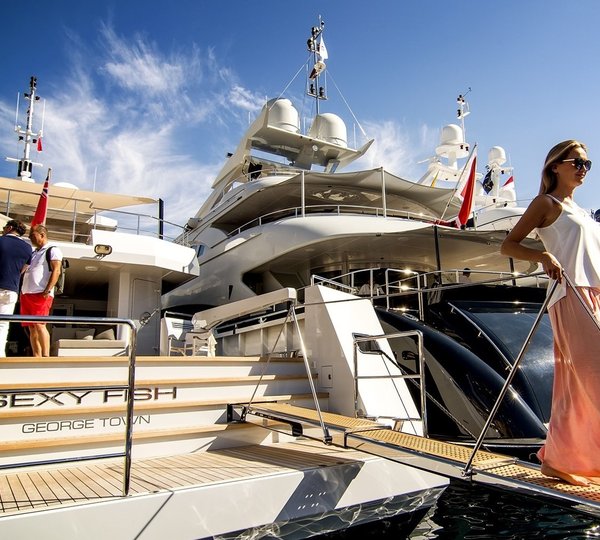
Luxury Yachts At Events

The Caribbean
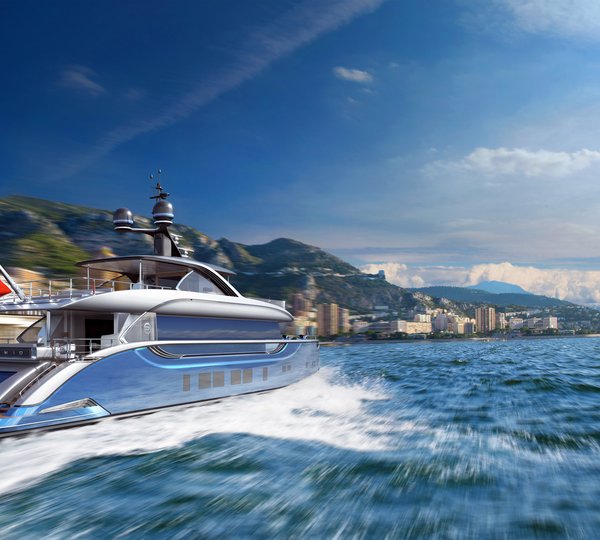
The Mediterranean
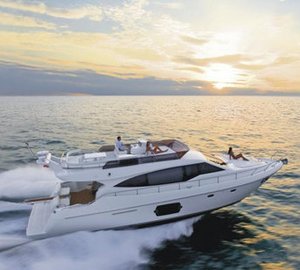
Ferretti Group announces its presence at Moscow Boat Show 2013
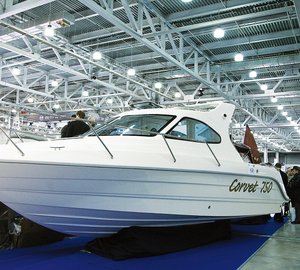
Dates for the 6th International exhibition of boats and yachts Moscow Boat Show 2013 revealed
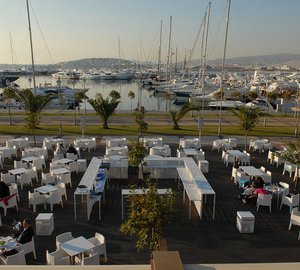
VIP Mega-Yacht Destination Flisvos Marina to participate in Moscow Boat Show 2013

Official Opening of Moscow Boat Show 2013 on March 12
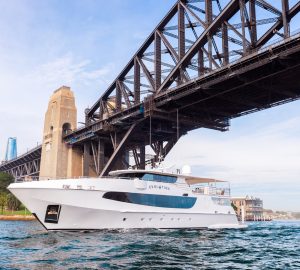
39m luxury yacht EVOLUTION for charter on Australia’s east coast

Charter Special on board 36m luxury yacht CALYPSO I from Italy to Greece
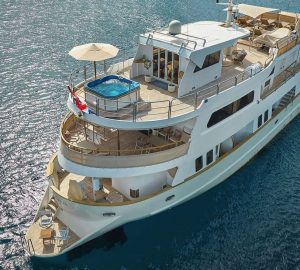
Croatian charter yacht LA PERLA offering 10% discount on exclusive vacations in the Adriatic

Charter a yacht during the Monaco Historic and F1 Grand Prix festivals and soak up the atmosphere from on deck
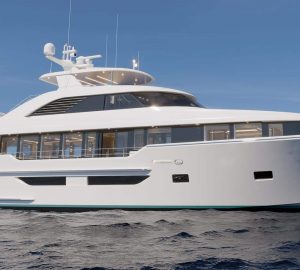
Westport announce the first hull of their 36m W117 range is nearing completion

Superyacht LAUNCHPAD previously Feadship 1010 delivered
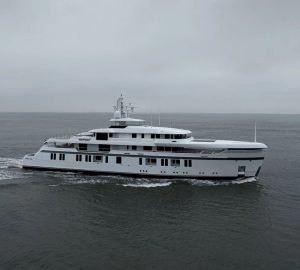
65m Feadship superyacht PROMISE.D delivered

Discover our Top 10 brand new yachts available for charter worldwide this year
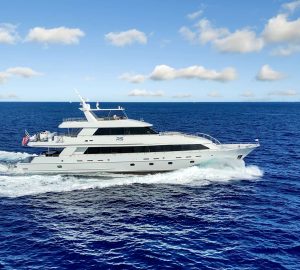
Florida charter yacht REAL SUMMERTIME offering 10% discount
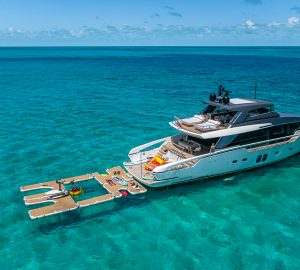
Discover summer in New England aboard a luxury charter yacht: Escape to this beautiful northeast corner of the USA
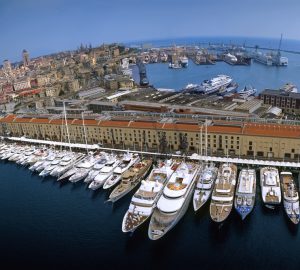
Looking ahead to the 2024 MYBA Charter Show in Genoa
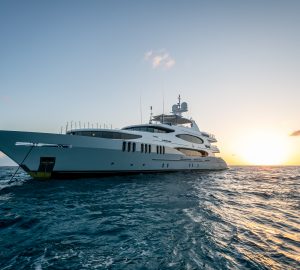
Last minute yacht charter deals in the Bahamas

49m sailing yacht ANIMA MARIS is offering discounted rates for the remaining summer weeks in Croatia

IMAGES
VIDEO
COMMENTS
Amateur and professional yacht crewing positions available worldwide, from daysailing to transocean for all experience levels. ... Crewseekers is run by experienced, professional sailors offering a friendly and helpful service to yacht crew and owners. We are the original yacht crew introduction agency - established for over 25 years ...
Sailing is an exciting and fulfilling way to explore the world with your family, but it's also a complex endeavor that requires a solid understanding of various crew positions and duties. In this article, we'll delve into the different roles on a sailboat, their responsibilities, and how they contribute to a successful sailing adventure.
While boat-dependent, all positions are some combination of the responsibilities of driver, bow, tactician, trimmer, and pit. The driver makes the final decisions and steers, while the other crew members play various roles providing information, trimming sails, and keeping the boat moving fast. The fundamental responsibilities of sailboat ...
3. Dead Reckoning. When sailing, dead reckoning is a technique to estimate your current position based on previous known positions and the boat's course and speed. Here's how you can do dead reckoning: 1. Record the boat's starting position, course, and speed. 2. Monitor the boat's course and speed over time, making adjustments for any changes.
The skipper is responsible for the safety of the yacht and the crew's welfare. However, sailing a boat successfully requires teamwork from the skipper and the crew. This will ensure that all maneuvers—such as leaving a mooring, hoisting sails, changing tacks, reefing, or entering a marina—can be completed with maximum enjoyment and minimum stress. Boat Captain/Skipper It may come as a ...
5 Tips to Perfect Race Communications on your Yacht News, stories, tips and resources on everything sailing and yacht racing. This site contains a compilation of articles and resources written by the team at MySail as well as news submitted from clubs, companies and individuals around the web.
Read on to learn what your crew wants you to remember each race! Photo by Sharon Green. While it's important to master your position on the boat, it's equally as important to understand what's going on in other domains and what you can do to make your teammates' life easier and help the boat sail smoothly. We reached out to a mix of ...
The Second and Third Engineers report directly to the Chief Engineer. They assist in maintaining all mechanical and electrical operations of the yacht. 2nd Engineer. €3,000 - €10,000. 3rd Engineer. €2,500 - €6,500. Sole Engineer. €3,500 - €12,000. Motorman.
Browse Yacht Jobs. Our crew database includes 5,133 Captains, 10,037 Deckhands, 2,947 Chief Engineers, 1,313 ETOs, 5,570 Chefs, 15,180 Stews, 1,469 Massage Therapists, etc. Here are some of the recently registered yacht crew members: Hundreds of live jobs on yachts and superyachts. Jobs for yacht crew in the Mediterranean, Caribbean, USA and ...
The Crew Network (TCN) is the longest serving professional and fully MLC compliant Crew Recruitment and Placement Agency in the world today. In 35 years, our multinational, multilingual teams have successfully filled over 10,000 positions ranging from Deckhands to Master Mariners, across all departments including the Engine Room and Interiors, on vessels from 24m (79′) to over 216m (709′).
From cruising, day sailing, deliveries, racing, island hopping, coastal sailing, eco projects and lots more. Contact skippers and captains direct. Find Boats. 100% Free. Find amateur and professional yacht crew and unpaid or paid crewing positions available worldwide. Local, coastal and ocean sailing for all levels.
The crew positions on a yacht are more complicated than that of a crew boat or a smaller sailing boat. While there are only six members, as compared to eight on a crew boat, they have more complicated responsibilities dealing with the mainsail as well as other factors involved in a yacht.
Thousands of yacht crew use YachtCareerHub every day. Powering yacht careers around the world, from greenies, to salty sea dogs. 2k+. crew registered. 30+. crew agencies listed. 600+. active jobs. 200+.
8. Sailor. National average salary: $47,819 per year Primary duties: A sailor is a crew member on a ship who provides essential tasks to keep it operating correctly. A sailor's responsibilities on a ship can vary based on their rank and experience, the size of the ship they work on, and its purpose.
Current sailing opportunities. All of our amazing sailing opportunities are free to browse - if you want to make contact with yacht owners you need to join Crewseekers. 188 sailing opportunities found: All trip types : All locations : All qualifications.
Inexperienced yacht crew working as deckhands or stewardesses can earn between $2000-3000 a month. With more experience and higher positions, your salary can be between $3500-$6000 a month. On charter trips, guests typically tip 5% - 15% of the weekly charter fee, which is split between crew members.
upgrade anytime, anywhere, anyone to Premium, either as a Boat or a Crew member with a Premium duration that suits you from one month to up to 5 years and chat (exchange personal messages) with any matching members Premium can be paused for up to 18 months Premium never renews automatically.
Coboaters allow crew to find sailing opportunities and allow boat owners to find crew! We connect thousands of boat owners with crew for sailing and boating adventures in USA, Canada and worldwide. It is a great sailing network where boat owners meet their sailing crew, chat, learn to know each other and spend time on boats together.
Recreational Crew Positions. Recreational boating activities such as amateur sailing, racing, fishing, diving, or other social pursuits often require the assistance of crew members. These crew positions are offered on leisure boats or yachts that are not intended for commercial use or profit-making activities.
Moscow Boat Show is rightfully called the main event in the Russian world of boats and yachts. ... The scale of the project confirms confident positions of its positive development. Moscow Boat Show 2013. Arcady Zlotnikov, Deputy Director General ZAO CROCUS INTERNATIONAL, was traditionally the first to take the floor at the official opening ...
Crew of the Fl. Abt. 21 ... User Name
The exposition space will increase up to 45 000 sq m in 2013. More than 350 Russian and foreign companies will participate in the show. The scale of the project confirms confident positions of its positive development. Moscow Boat Show is the largest project in Russia presenting all the best in the world of yachting.
Details. +7 (495) 215-54-15Moscow, «Dmitrovskaya» metro station,str. Novodmitrovskaya, 5A bldg. 1. Pole Dance Studio. Pole Positions Moscow is not just a successful pole dance studio known all over the world. It is happy stories about love to dancing, sport and art; a story of beautiful victories, unforgettable meetings and strong friendship.